Stop Being Hungry by 10 AM: The Pro’s Guide to Building a Real Breakfast
For years, my breakfast in professional kitchens was whatever was fast—usually a shot of espresso and a leftover pastry. Sound familiar? I’d ride a wave of caffeine and sugar until lunch, and then I’d crash. Hard. I always told myself I was just too busy for a real meal, but honestly, I didn’t get what a real breakfast was even for. It wasn’t until I started working with nutrition pros and teaching apprentices about health that it all clicked. Breakfast isn’t just food; it’s the foundation for your entire day’s performance.
In this article
So, this isn’t going to be another list of eighty recipes you’ll never make. My goal is to show you the principles behind building a breakfast that actually works. We’re talking about steady energy and sharp focus, whether you’re heading to an office, a job site, or just wrangling a busy day at home. Forget the complicated stuff. Let’s get back to basics.
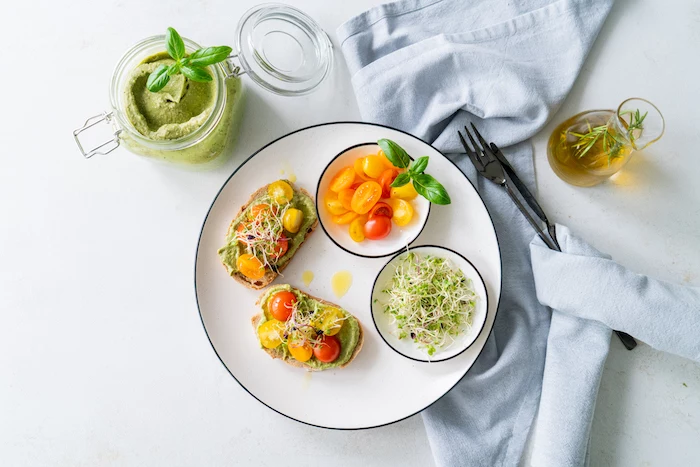
The Simple Science of Your First Meal
To cook well, you have to understand your ingredients. The same goes for eating well—you have to understand what your body actually needs. The single most common breakfast mistake? Kicking off the day with a massive spike of simple sugar. Think sugary cereal, a doughnut, or even a big glass of orange juice on its own.
It feels like a burst of energy, right? That’s because your blood sugar is skyrocketing. The problem is, what goes up must come down. Your body releases a flood of insulin to handle the sugar, and an hour or two later, you hit the wall. You’re tired, you can’t focus, and you’re already hungry again. It’s a frustrating cycle.
A foundational breakfast does the opposite. It aims for slow, sustained energy. We get there by focusing on three core building blocks:
- Protein: This is the slow-burning log on the fire. It’s what makes you feel full and satisfied (the pros call this satiety) and stops you from rummaging for snacks mid-morning. We’re talking about eggs, Greek yogurt, cottage cheese, and tofu.
- Complex Carbs: This is your steady fuel source. Unlike simple sugars, these break down slowly, giving you a controlled energy release. Think rolled oats, whole-grain bread, or even a small sweet potato.
- Healthy Fats: These are crucial for brain function and help you feel full longer. Good old avocado, nuts, and seeds are your best friends here.
Here’s the analogy I use: a breakfast of just simple carbs is like lighting a newspaper. It flares up bright and is gone in a flash. A balanced breakfast is like a seasoned oak log. It catches slowly, burns steadily, and gives off consistent warmth for hours. Once you get this, you’re free. You can just look in your fridge and start building.
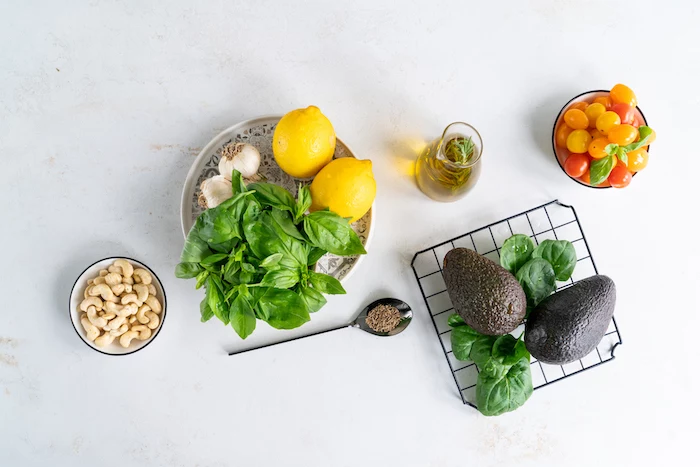
Your Breakfast Blueprint: The Core Components
Okay, let’s move from theory to the kitchen. The secret to a great breakfast isn’t a thousand different ingredients; it’s knowing how to handle a few key ones really well. A good target to aim for is 20-30 grams of protein to keep you genuinely full until lunch.
Step 1: Pick Your Protein Powerhouse
This part is non-negotiable if you’re tired of that 10 a.m. hunger pang. It’s almost always the missing piece.
The Classic: Eggs
Two large eggs give you about 12-14 grams of top-notch protein. They are also incredibly budget-friendly, often costing just $3 to $5 a dozen. But preparation is everything.
- The Perfect Poach: This sounds intimidating, but it’s not. Bring water to a simmer (gentle bubbles, not a rolling boil) and add a splash of plain vinegar. The acid helps the egg white set faster. Crack a super-fresh egg into a small bowl first. Swirl the water to create a gentle whirlpool and slide the egg into the center. Set a timer for 3-4 minutes for a perfect runny yolk. Lift it out with a slotted spoon. Done.
- Restaurant-Style Soft Scramble: The secret is LOW heat and constant motion. Crack two eggs in a bowl with a pinch of salt and whisk lightly. Put a non-stick pan on low heat with a bit of butter or oil. Pour in the eggs. Let them sit for 20 seconds, then use a rubber spatula to gently push them from the edge to the center. Slow and steady wins the race. The second they look mostly set but still a bit wet, pull them off the heat. They’ll finish cooking in the hot pan. The result? Creamy, dreamy eggs, not rubbery ones.
A quick heads up: Health authorities recommend cooking eggs until the yolk and white are firm to avoid any foodborne illness risks. This is especially important for kids, older adults, and anyone with a compromised immune system. Cook to whatever level feels safe for you!
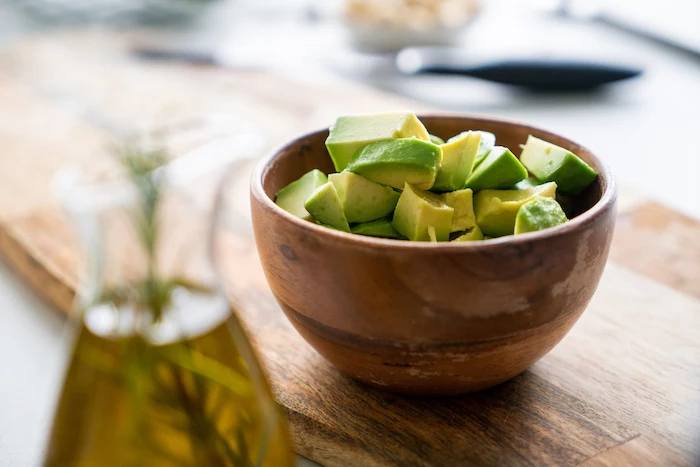
The Creamy Crew: Yogurt, Kefir & Cottage Cheese
Plain, unsweetened Greek yogurt is a powerhouse, often packing 15-20 grams of protein per serving. Cottage cheese is another fantastic choice, and it’s usually cheaper. A half-cup serving can easily provide 14 grams of protein.
By the way, I know what you’re thinking: plain yogurt is… bland. Here’s how to fix it without buying the sugar-loaded flavored versions:
- Stir in a dash of cinnamon and a few drops of vanilla extract.
- Add a tiny spoonful of real maple syrup or honey and top with fresh berries.
- My personal favorite: swirl in a tablespoon of natural peanut or almond butter. It’s a game-changer.
Plant-Based Option: The Tofu Scramble
Not an egg or dairy person? No problem. Crumble half a block of firm tofu (about 15-20g of protein) into a pan with a little olive oil, a pinch of turmeric for that yellow color, some garlic powder, and a sprinkle of nutritional yeast for a cheesy flavor. It’s a fantastic and filling alternative.
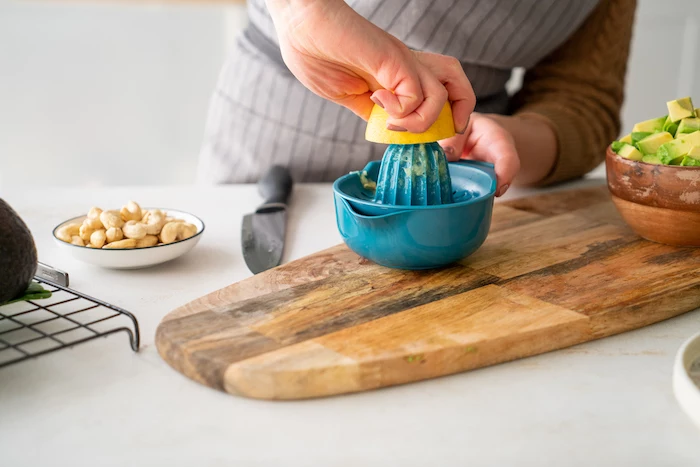
Step 2: Add a Smart, Complex Carb
Now for that steady energy. Ditch the sugary stuff and go for something that has some fiber and substance.
The Pro’s Oatmeal: Forget mushy, watery oats. For perfect, creamy oatmeal, the ratio is key: 1 part rolled oats to 2 parts water (e.g., 1/2 cup oats, 1 cup water). ALWAYS add a pinch of salt—it brings out the nutty flavor. Bring it to a simmer on the stove, then turn the heat down to low and let it gently bubble away for about 5-7 minutes, stirring occasionally. This low-and-slow method makes them incredibly creamy, no milk required.
The Humble Toast: One or two slices of a hearty, whole-grain or sourdough bread provide an excellent base for your protein and fat. Look for bread where you can see the actual grains and seeds.
Step 3: Include a Healthy Fat
This is what gives your breakfast staying power and helps your brain fire on all cylinders.
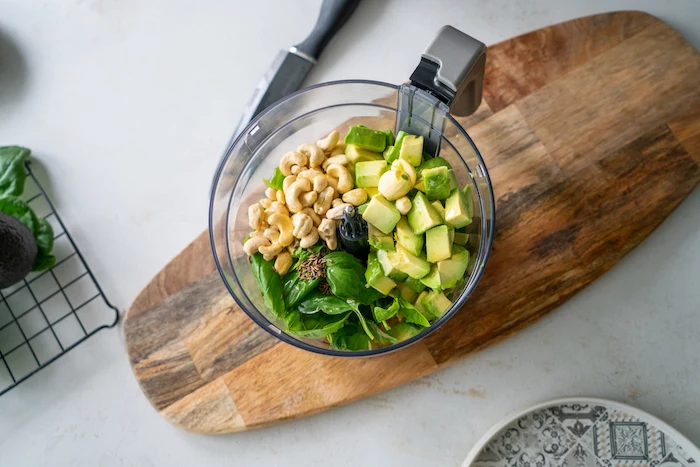
Avocado: A quarter or half of an avocado is perfect. Good to know: When buying one, look for one that yields to gentle pressure but isn’t mushy. If it’s rock hard, leave it on your counter for a day or two. If it’s soft, it’s ready to go.
Nuts & Seeds: A tablespoon of chia seeds, ground flaxseeds, or a small handful of walnuts or almonds adds healthy fats, fiber, and a satisfying crunch. Chia seeds are great because they plump up in yogurt or oatmeal, making the meal even more filling.
Putting It All Together: Breakfast Combos That Work
So what does this look like in a bowl or on a plate?
- The Classic: Two soft-scrambled eggs, one slice of whole-grain toast topped with 1/4 of an avocado. (About 20g protein)
- The Power Bowl: 3/4 cup of plain Greek yogurt swirled with a tablespoon of almond butter, topped with berries and a sprinkle of chia seeds. (About 25-30g protein)
- The Vegan Scramble: A tofu scramble with turmeric and nutritional yeast, served alongside a half-cup of oatmeal made with a pinch of cinnamon. (About 20-25g protein)
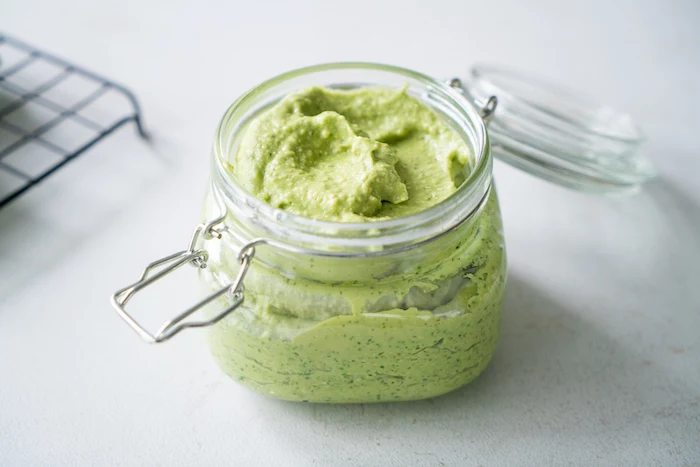
Time-Saving Hacks for a Better Morning
Look, I get it. Mornings are chaotic.
- Prep Ahead: Hard-boil a half-dozen eggs on Sunday. They’re a perfect grab-and-go protein source for the next few days.
- Smoothie Packs: Portion out smoothie ingredients (spinach, protein powder, frozen berries, a spoonful of flax seeds) into freezer bags. In the morning, just dump a bag into the blender with water or your milk of choice.
- Overnight Oats: Mix your oats, a scoop of protein powder, chia seeds, and liquid in a jar the night before. Breakfast is literally ready when you wake up.
Heads Up! Common Breakfast Traps to Avoid
A quick word of warning. Some foods scream ‘healthy’ on the box but are actually just dessert in disguise.
- Most Store-Bought Granola: Check the label. Many are loaded with more sugar than a candy bar.
- Fruit-Only Smoothies: A smoothie with just fruit and juice will cause the same blood sugar spike and crash we talked about earlier. ALWAYS add a source of protein (powder, yogurt, tofu) and fat (avocado, nut butter) to balance it out.
- Most Breakfast Bars: Again, read the ingredients. If sugar or high-fructose corn syrup is near the top of the list, put it back. It’s just a cookie masquerading as health food.
And that’s really it. It’s not about finding one ‘perfect’ breakfast, but about having the tools to build a great one every single day. Give it a try, and just see how you feel around 10 or 11 a.m. The difference might surprise you.
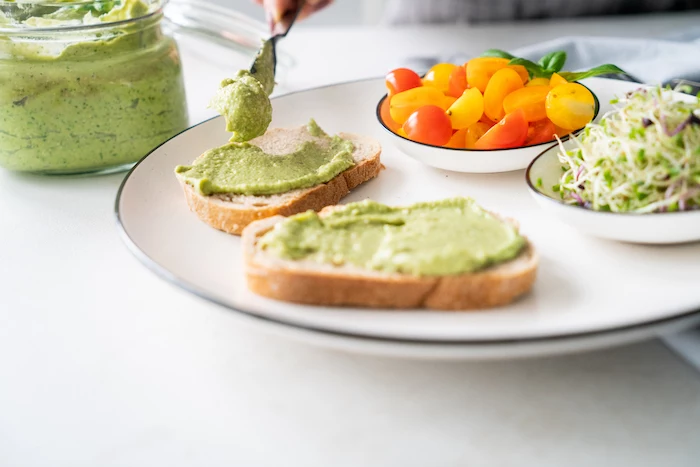
Inspiration Gallery
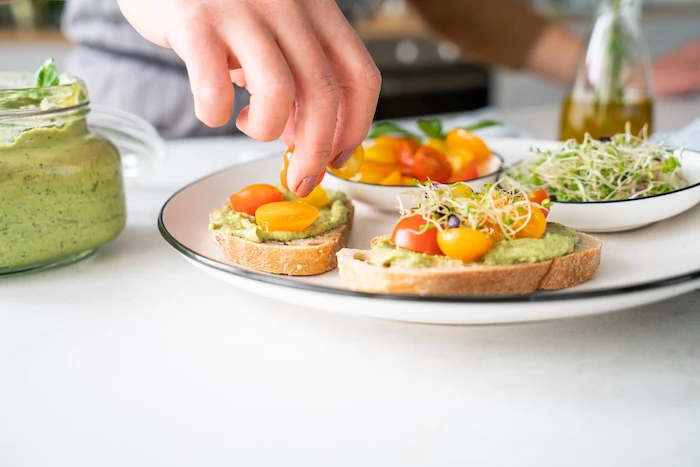

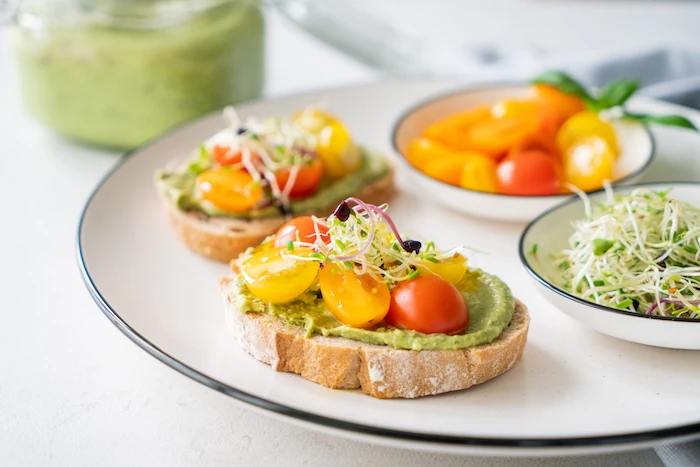
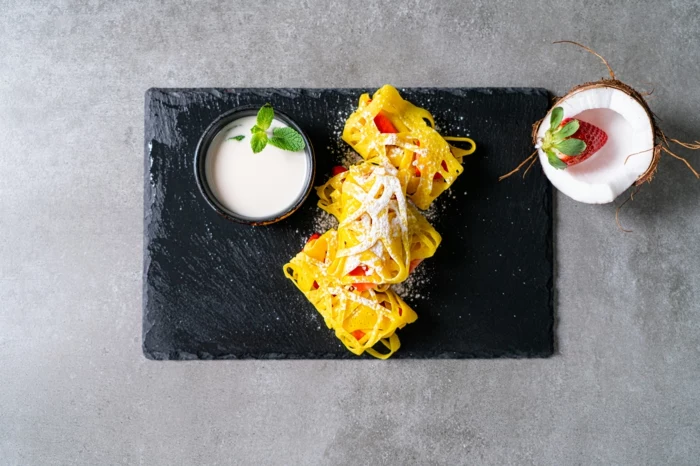
The Smoothie Trap: A fruit-only smoothie can be a sugar bomb in disguise. To build a better blend, always include a source of protein like a scoop of unflavored Orgain plant-based protein or a large spoonful of Fage Total 0% Greek yogurt. Add a handful of spinach (you won’t taste it!) and a tablespoon of almond butter for fiber and healthy fats to slow down sugar absorption.
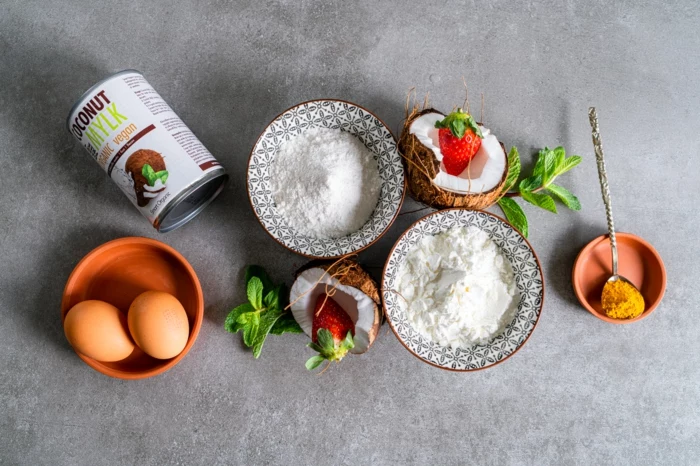

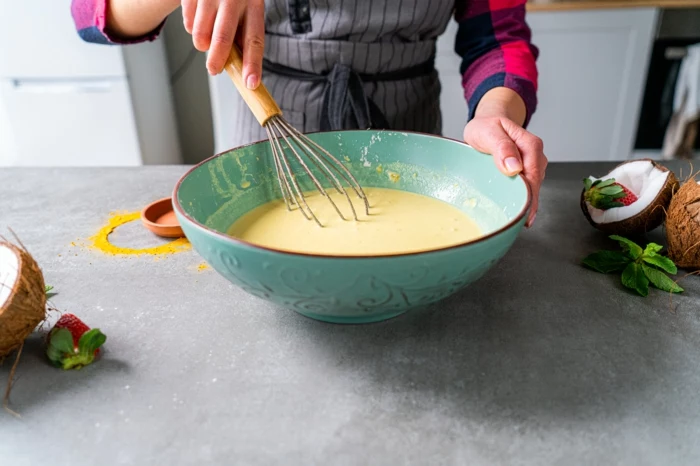
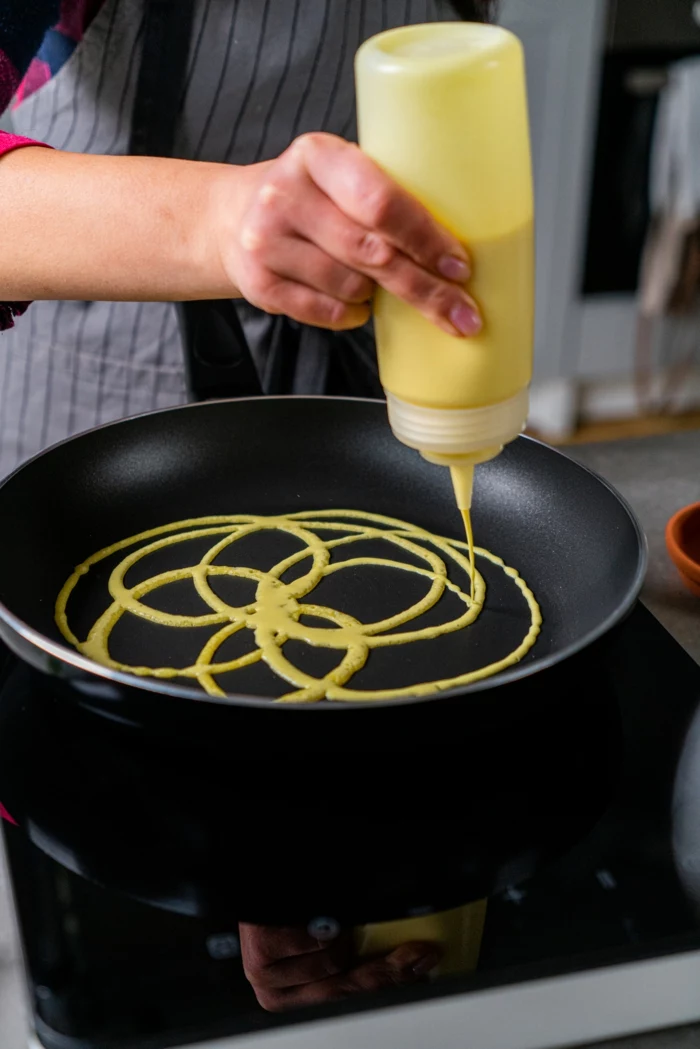
- Sustained mental clarity without the 11 AM fog.
- Fewer cravings for sugary or salty snacks throughout the day.
- A stable mood, avoiding the irritability that comes with a blood sugar crash.
The key to unlocking these benefits? Prioritizing at least 20 grams of protein in your first meal.

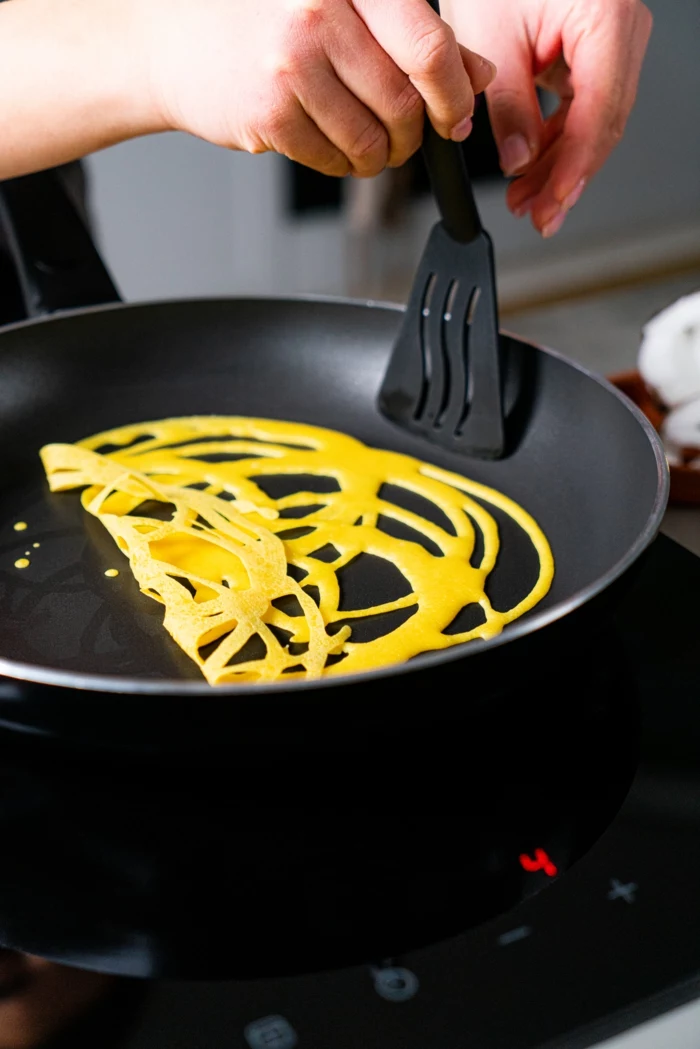
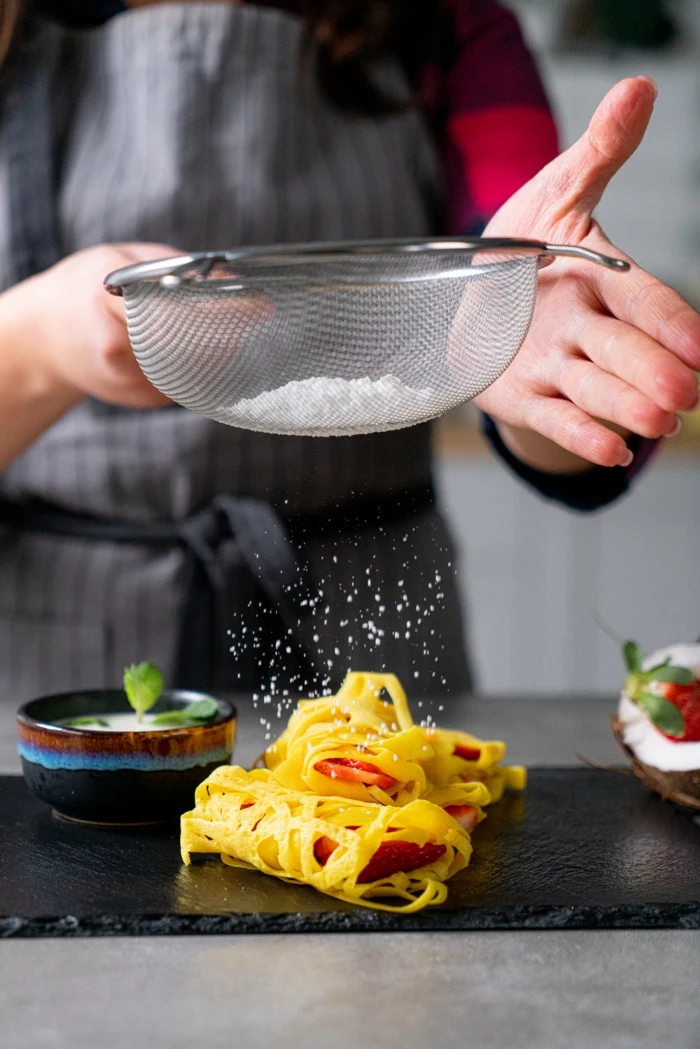
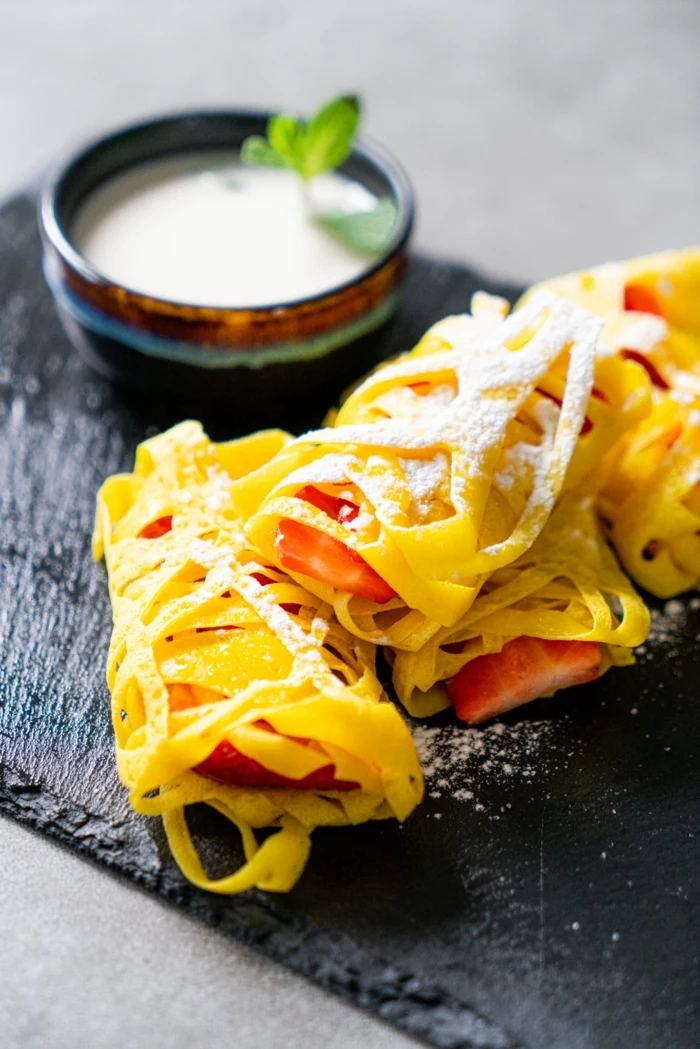
A study published in the journal ‘Nutrients’ found that eating breakfast, particularly one rich in protein, is linked to better cognitive function, including memory and attention, throughout the morning.
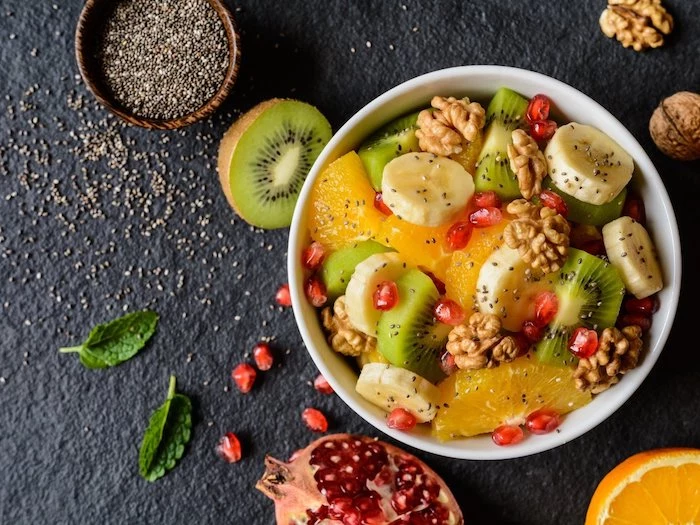

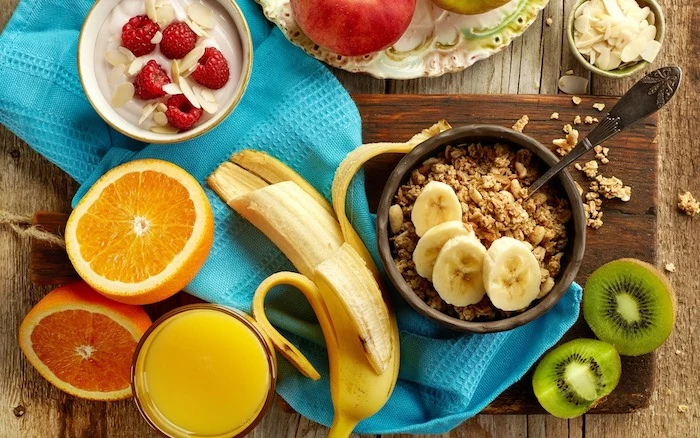
Tired of eggs and yogurt?
Think savory. A bowl of cottage cheese (brands like Good Culture offer gut-friendly probiotics) topped with sliced cherry tomatoes, cucumber, and a drizzle of extra virgin olive oil is a refreshing, protein-packed alternative. Sprinkle with everything bagel seasoning for a flavor boost that takes seconds.
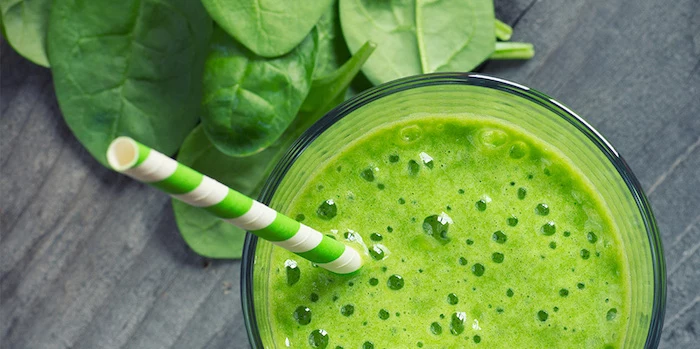
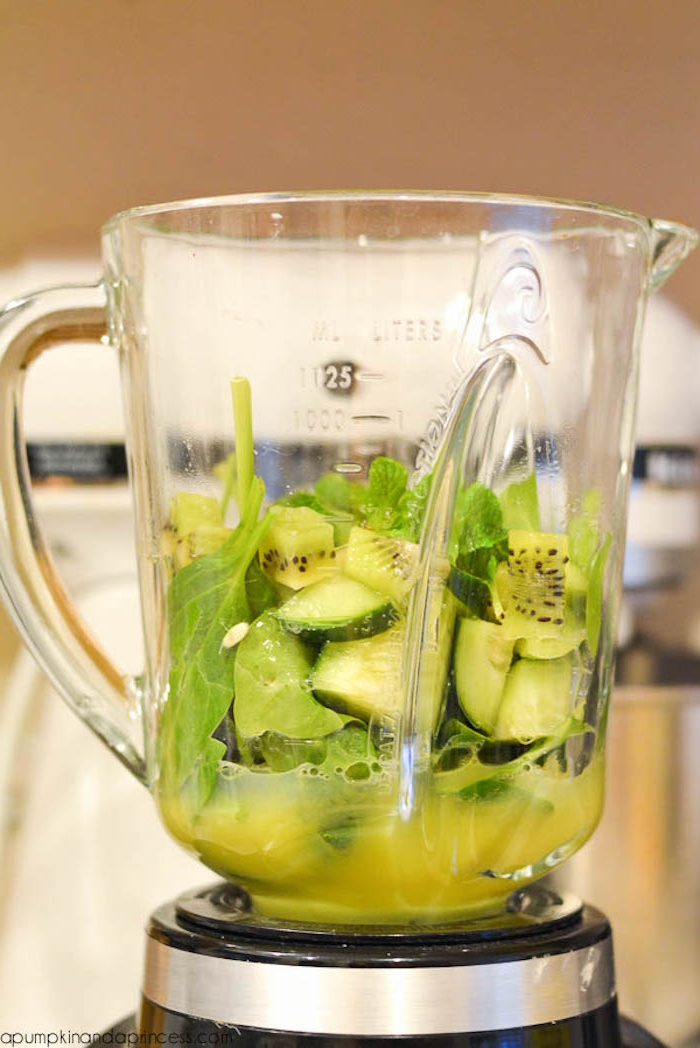
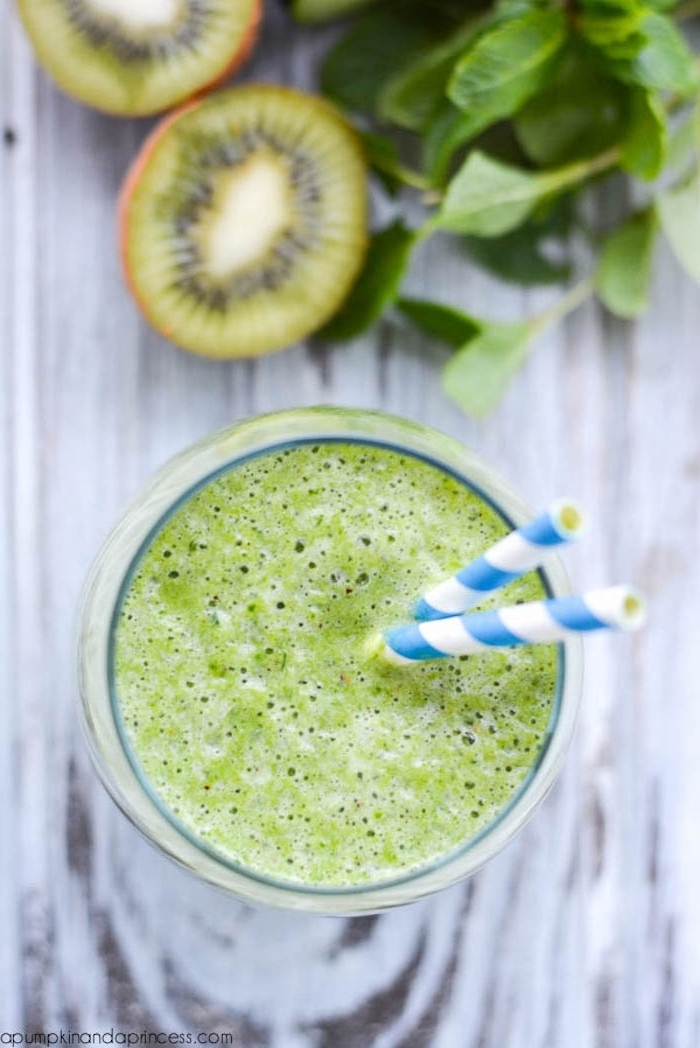
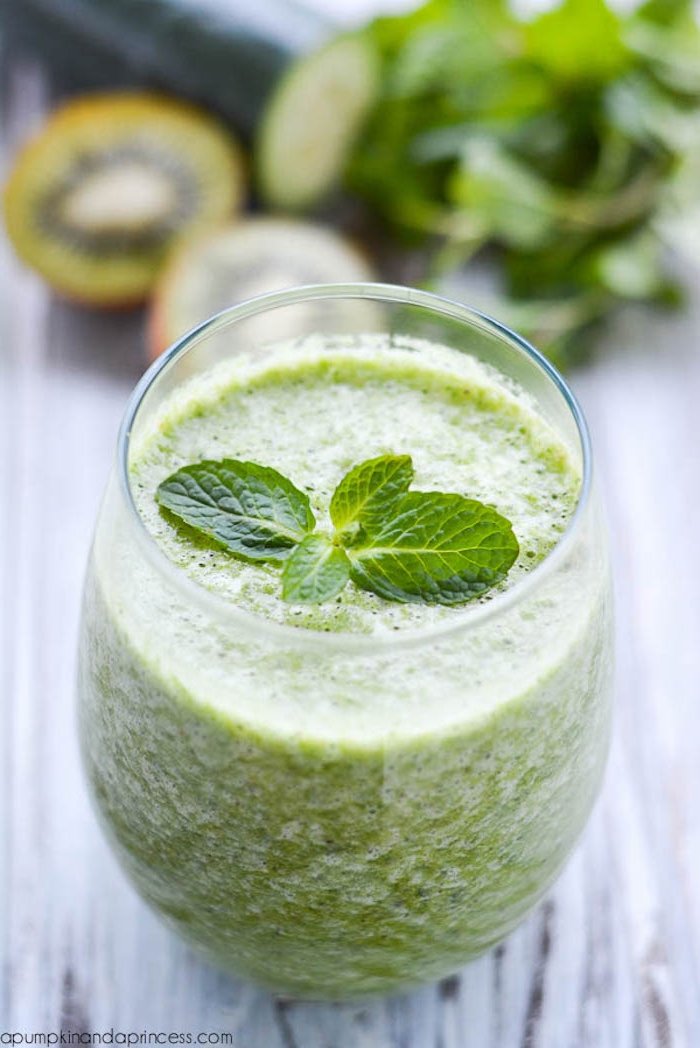
Steel-Cut Oats: The whole oat groat is simply chopped. This results in a chewier texture and a lower glycemic index, meaning a slower energy release. They take longer to cook, about 20-30 minutes.
Rolled Oats: The oat groats are steamed and flattened. This pre-cooking process means they’re ready in 5-10 minutes, making them ideal for quick mornings. They have a softer texture.
For the best of both worlds, cook a large batch of steel-cut oats on Sunday to reheat through the week.
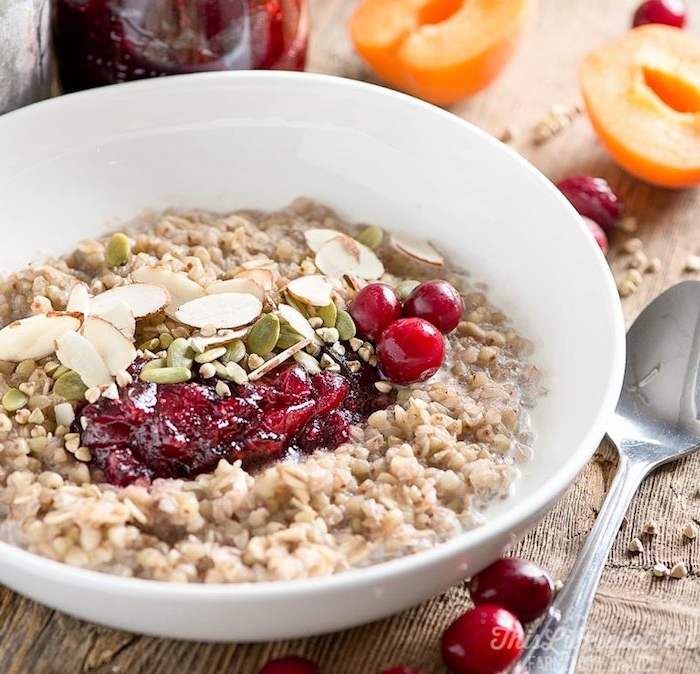
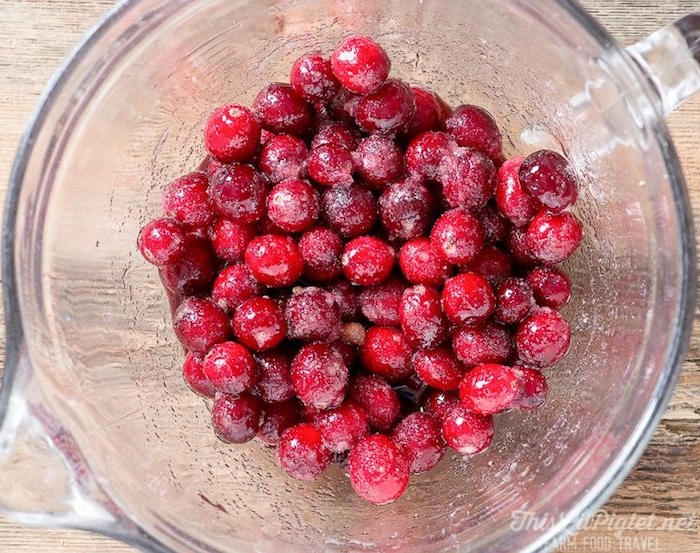
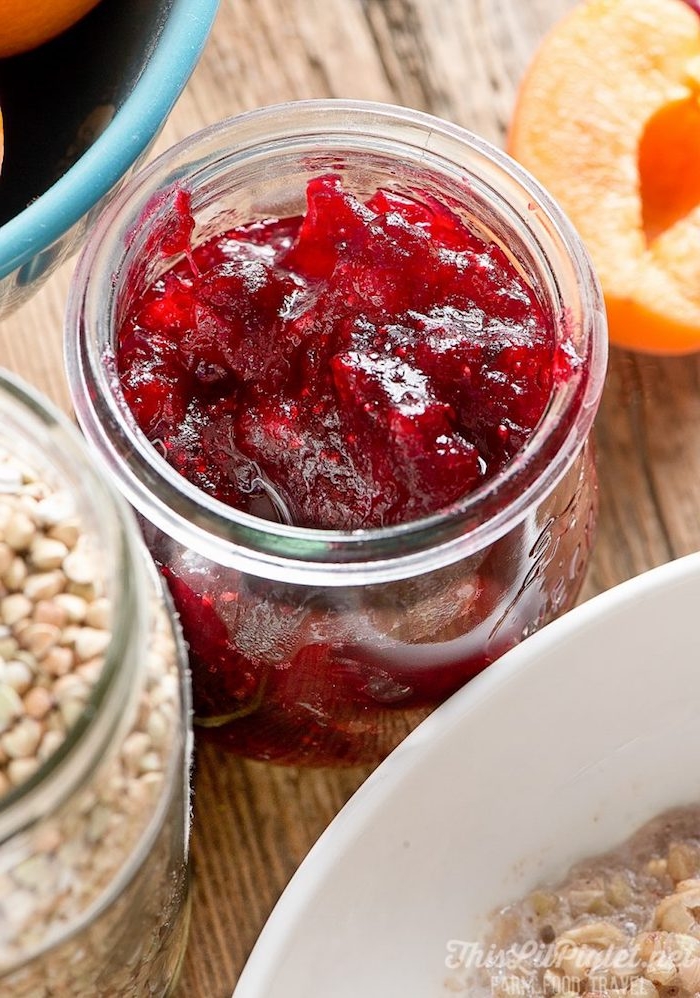
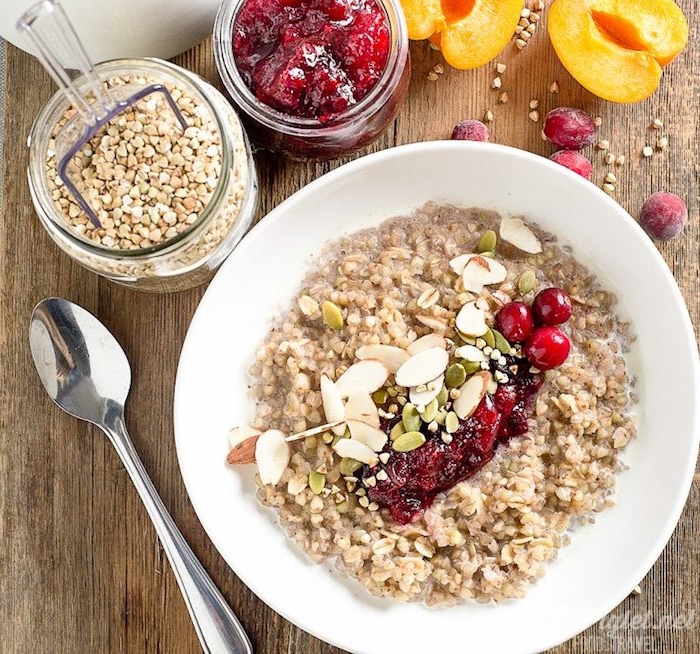
Don’t overlook the power of seeds. Just one tablespoon can transform your breakfast’s nutritional profile.
- Chia Seeds: Packed with fiber and omega-3s, they absorb liquid and create a filling gel. Perfect for overnight puddings.
- Flax Seeds (ground): A great source of lignans and fiber. Add to smoothies or sprinkle over oats.
- Hemp Hearts: Offer a surprising amount of protein (about 10g per 3 tbsp) and a pleasant nutty flavor.
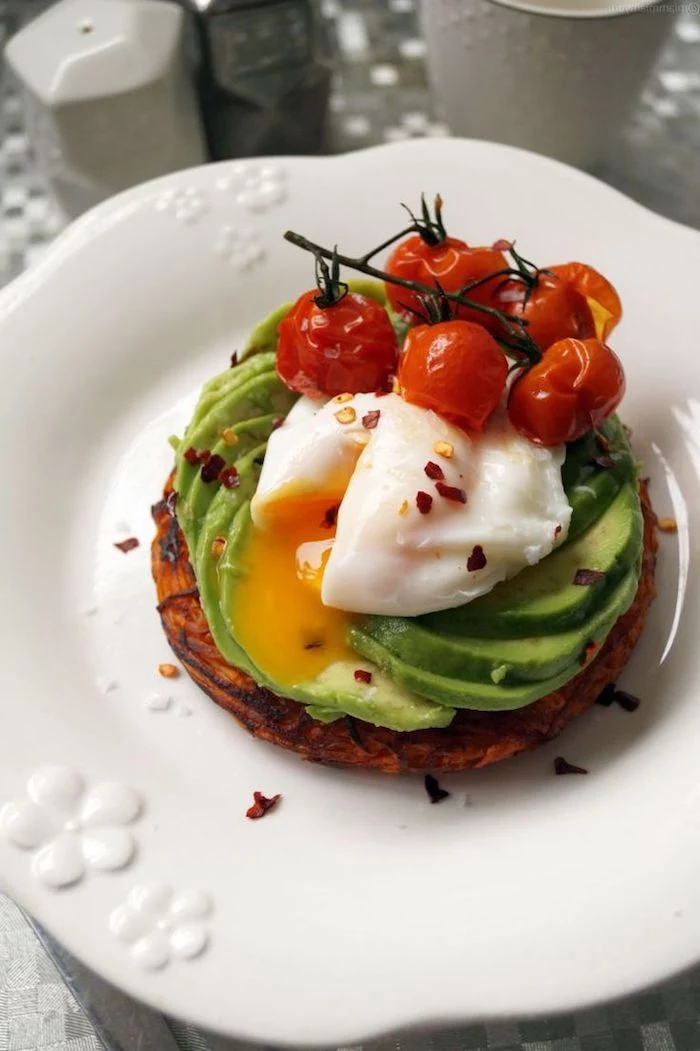
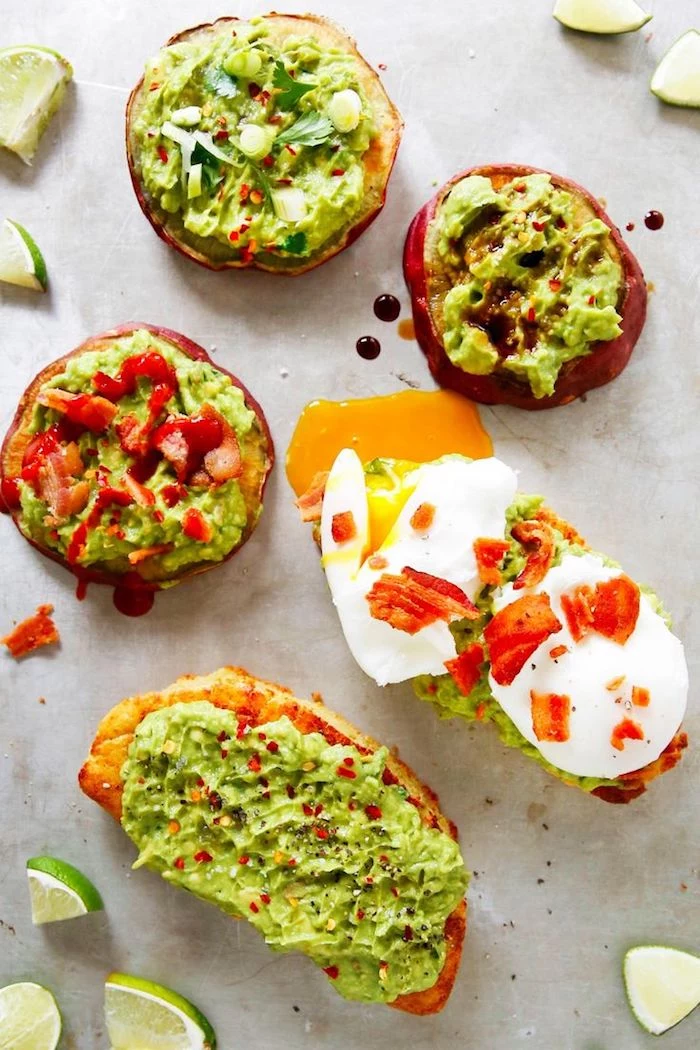
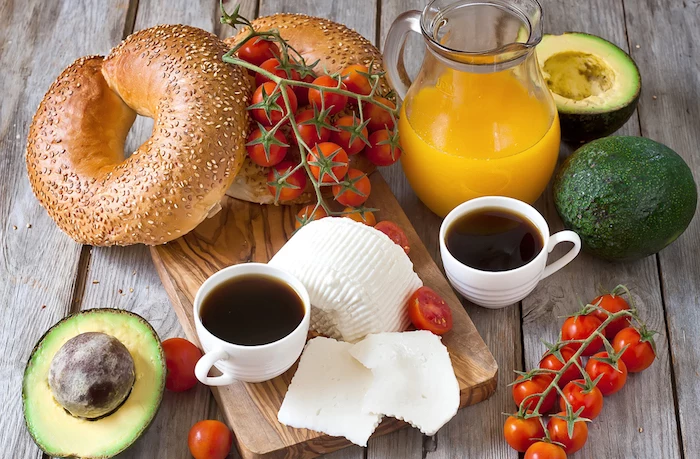
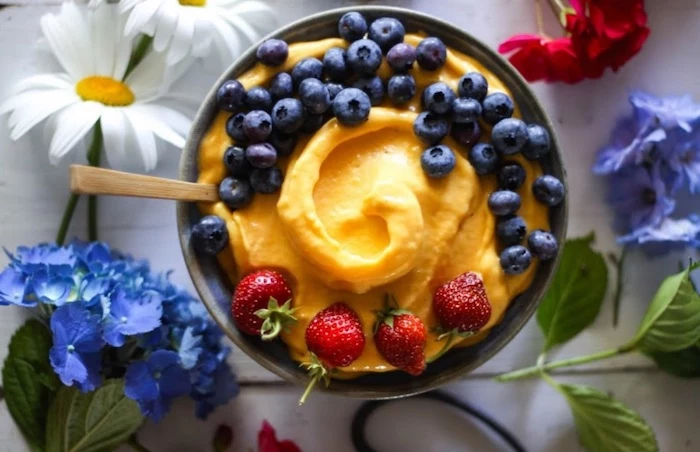
Pro-Tip for Busy Mornings: The freezer is your best friend. Portion smoothie ingredients—like kale, frozen berries, and a scoop of protein powder—into reusable bags. In the morning, just dump the contents into your blender (a NutriBullet is perfect for single servings), add almond milk or water, and blend. A balanced breakfast in under 60 seconds.

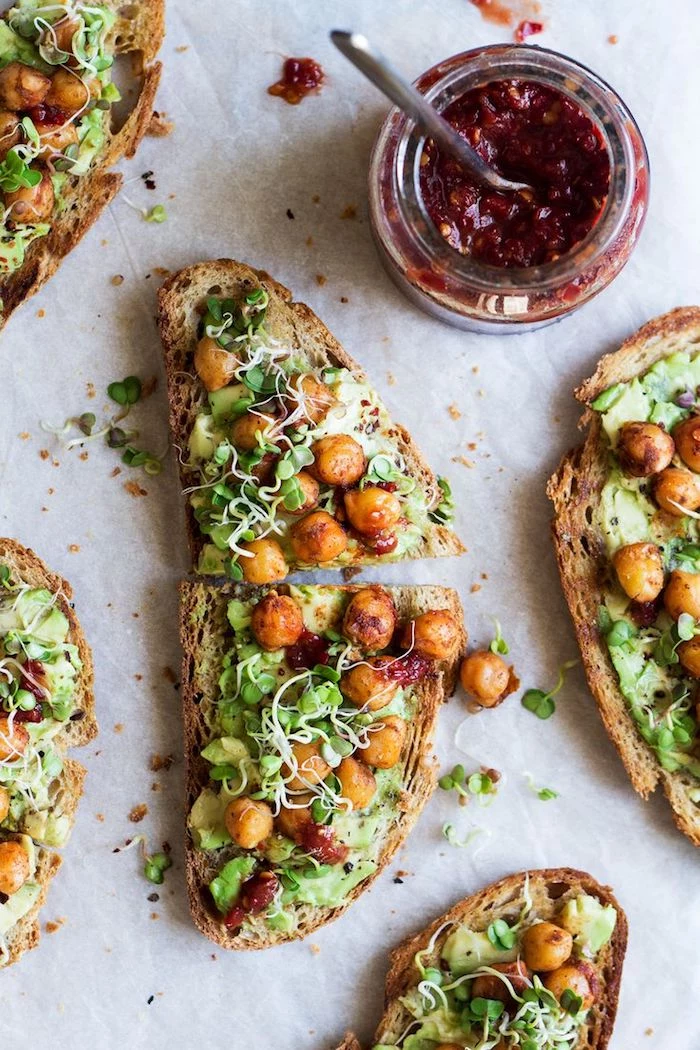
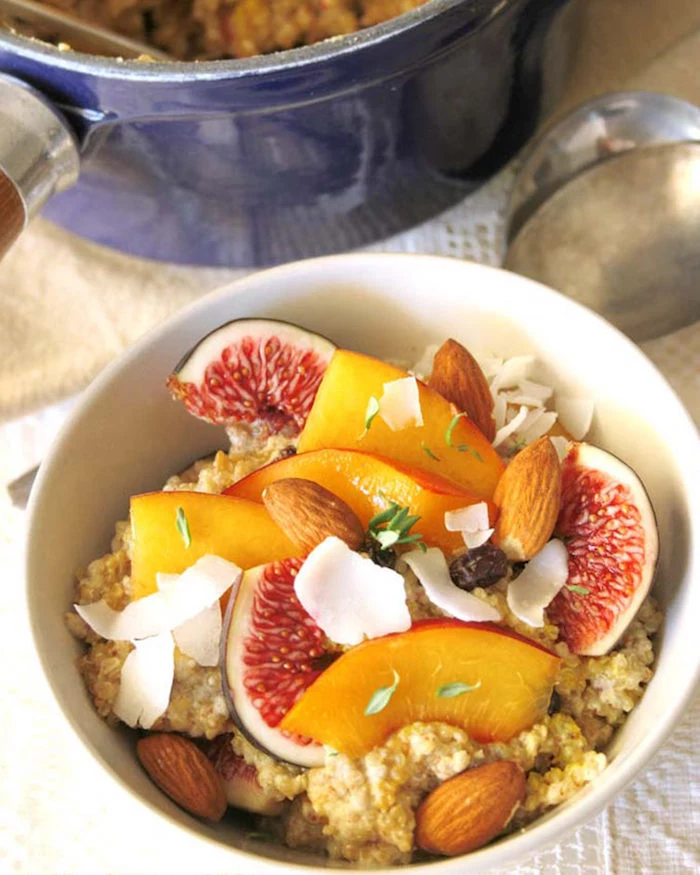
Did you know that the term ‘breakfast’ literally means to ‘break the fast’ of the night? After 8-12 hours without food, your body’s glycogen stores are low. Refueling them properly sets your metabolic tone for the entire day.
Starting with simple sugars forces your body into a reactive state, managing a glucose spike. A balanced meal with protein and fat, however, provides the building blocks for stable energy and hormone production.
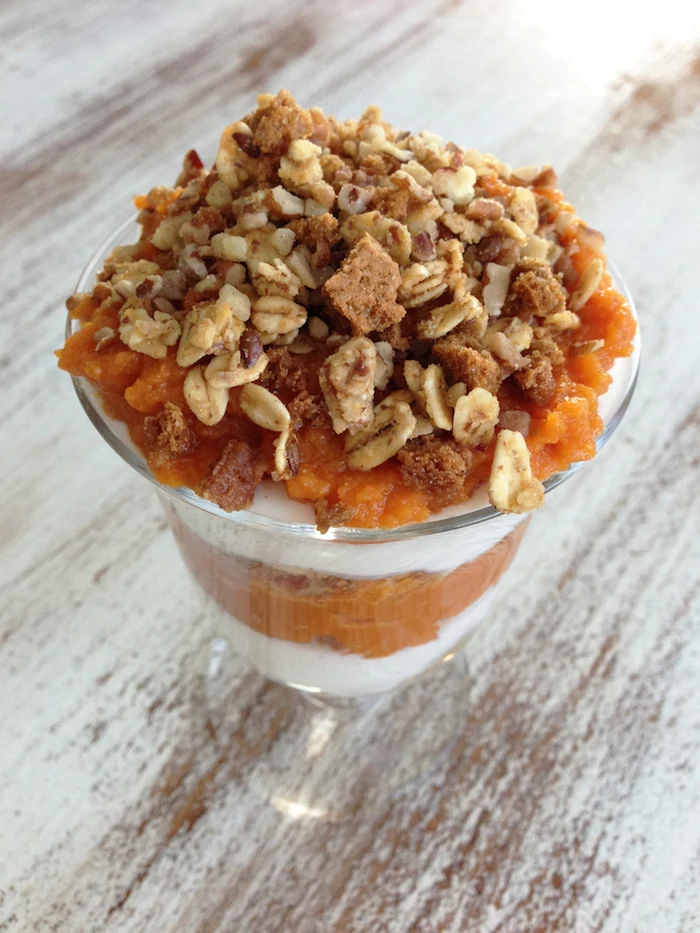
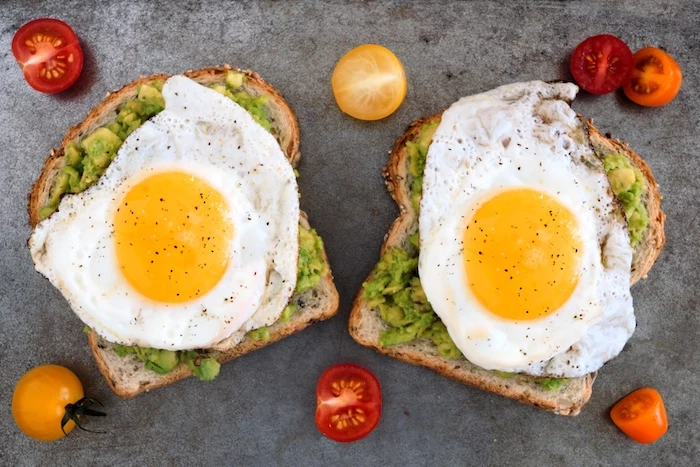
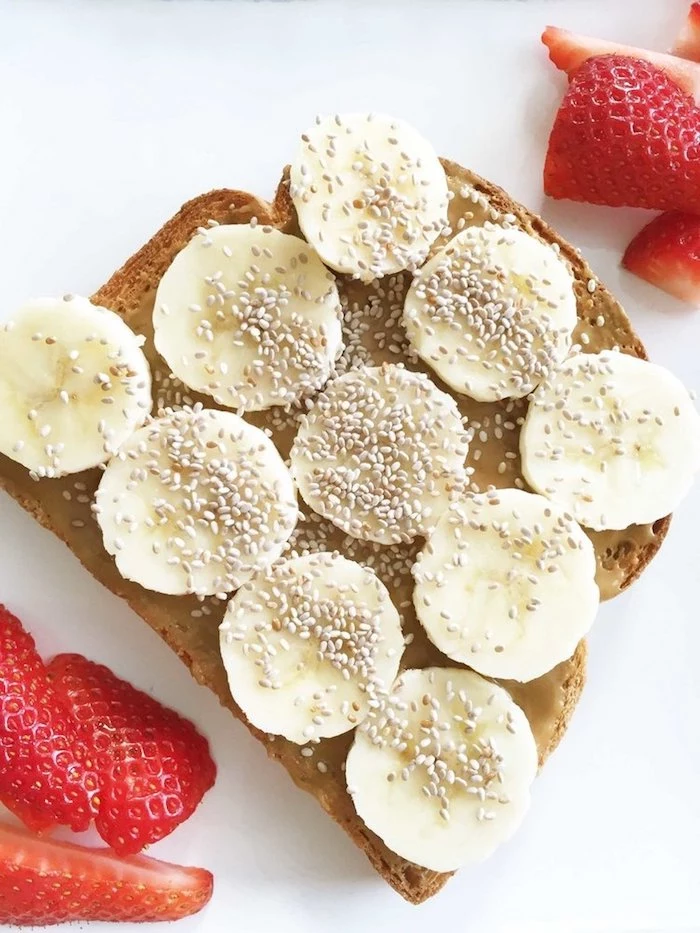
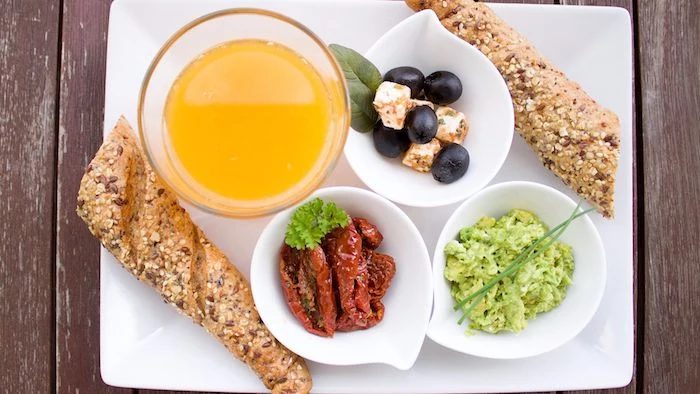
Rethink your toast. Instead of jam, try a protein-rich spread. A slice of Dave’s Killer Bread 21 Whole Grains and Seeds topped with mashed avocado is a classic, but you can also use hummus, or even a thin layer of smoked salmon and cream cheese for a decadent, satisfying start.
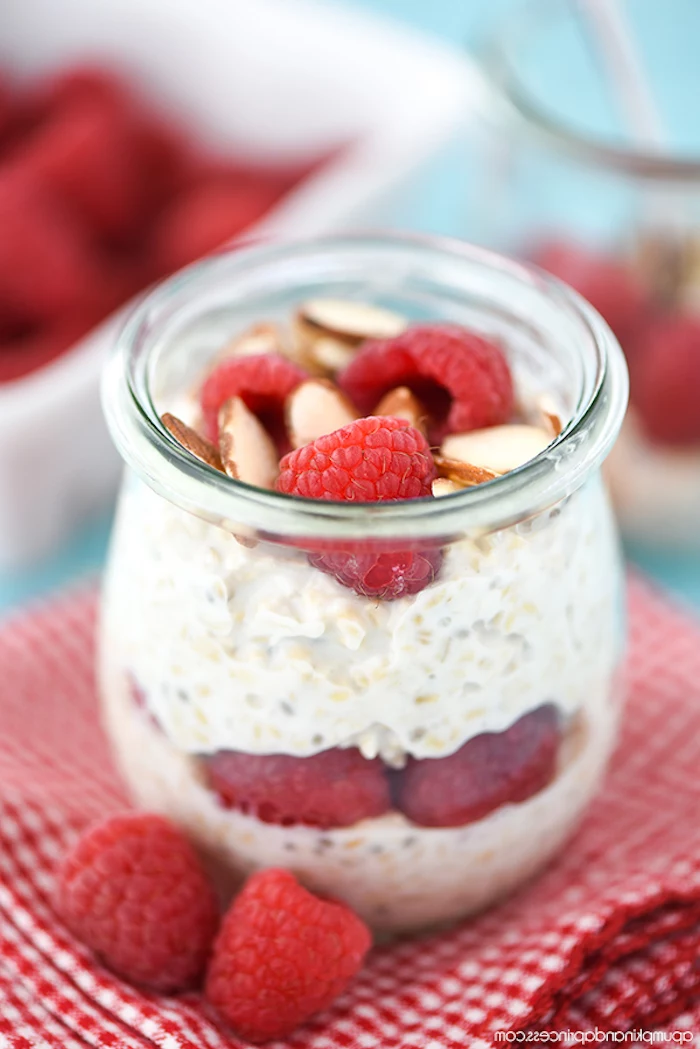
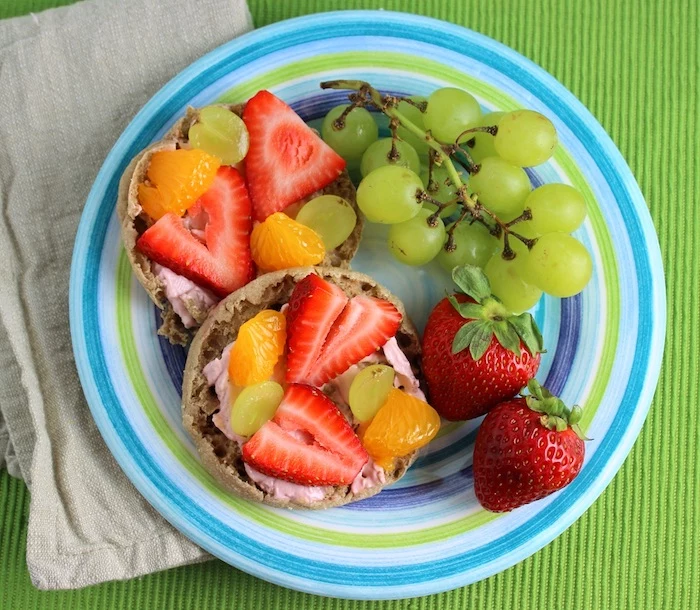
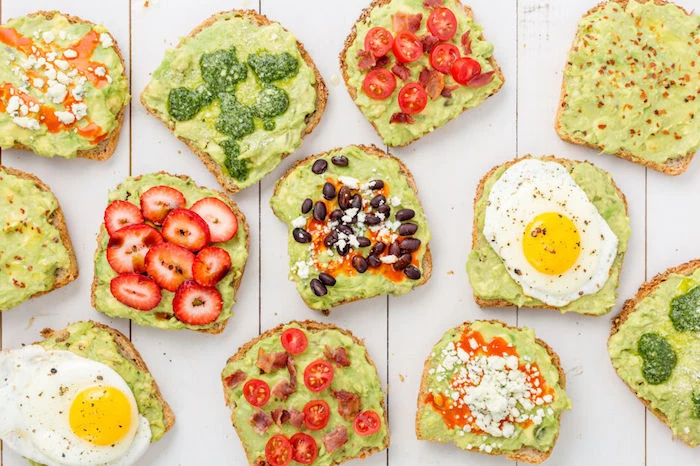
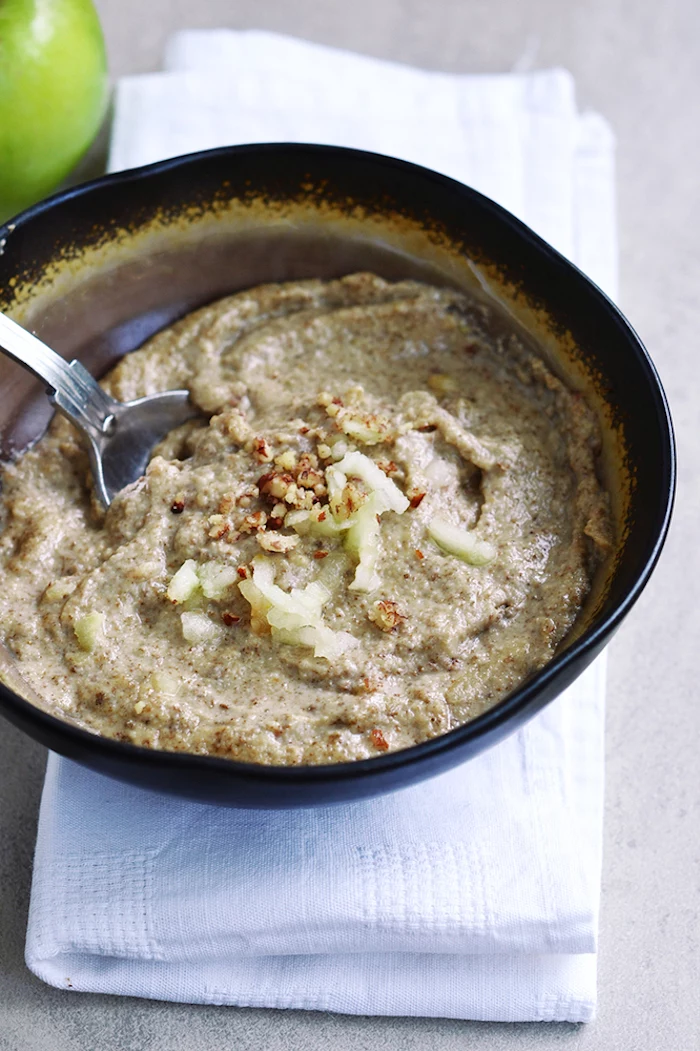
- Make a batch of hard-boiled eggs to have on hand for the week.
- Portion out nuts and seeds into small containers for a quick fat-and-protein add-on.
- Mix your own high-protein pancake mix (using oat flour and protein powder) and store it in an airtight container.
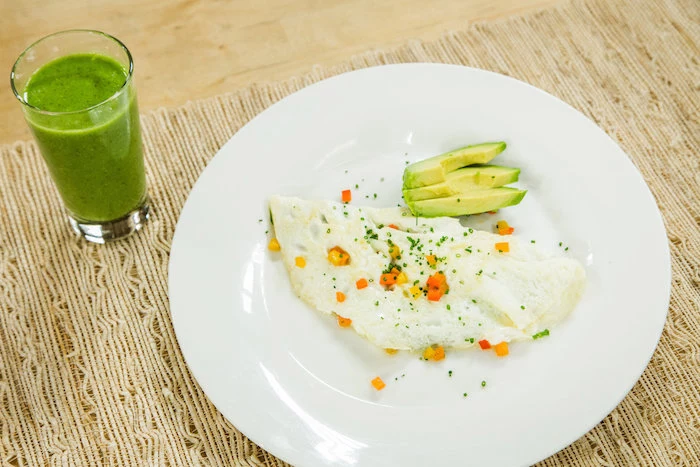
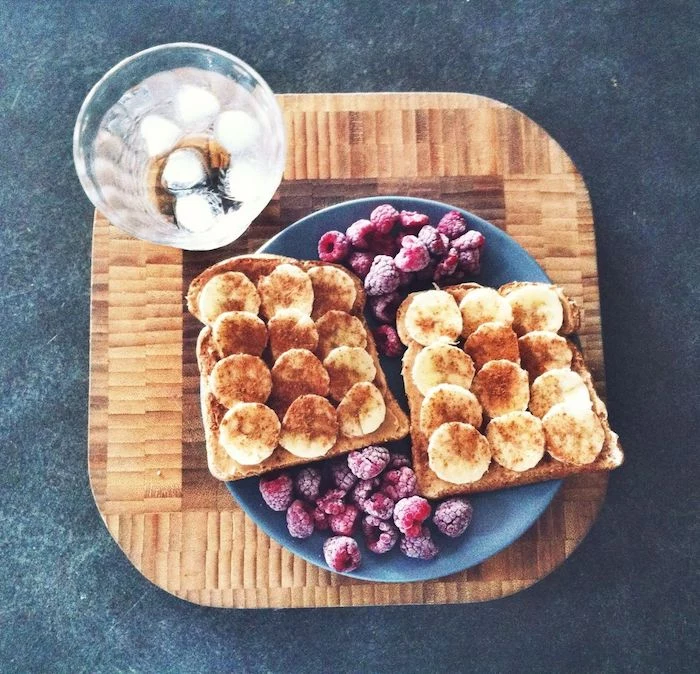
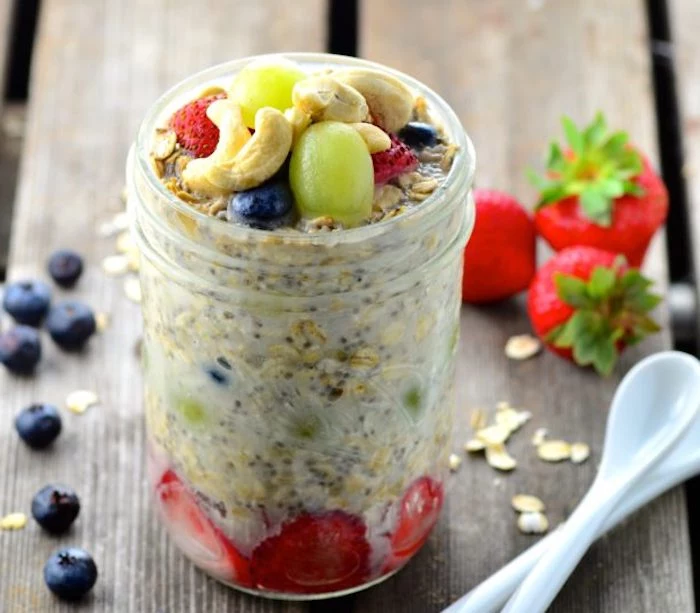
The Hydration Factor: Sometimes, feelings of hunger are actually signs of dehydration. Start your day with a large glass of water before your coffee or tea. This not only rehydrates you after a long night’s sleep but also helps kickstart your metabolism and can prevent you from overeating at breakfast.
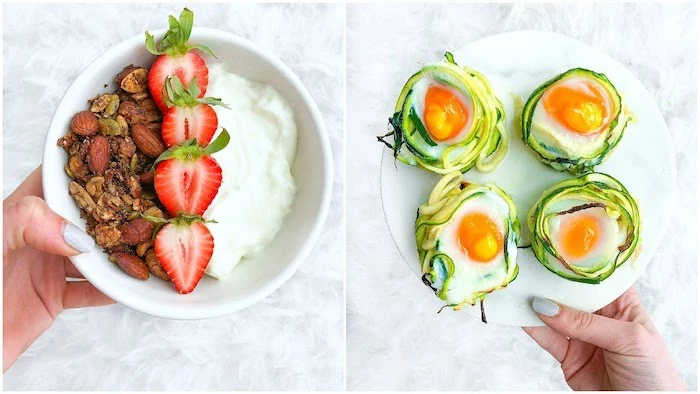
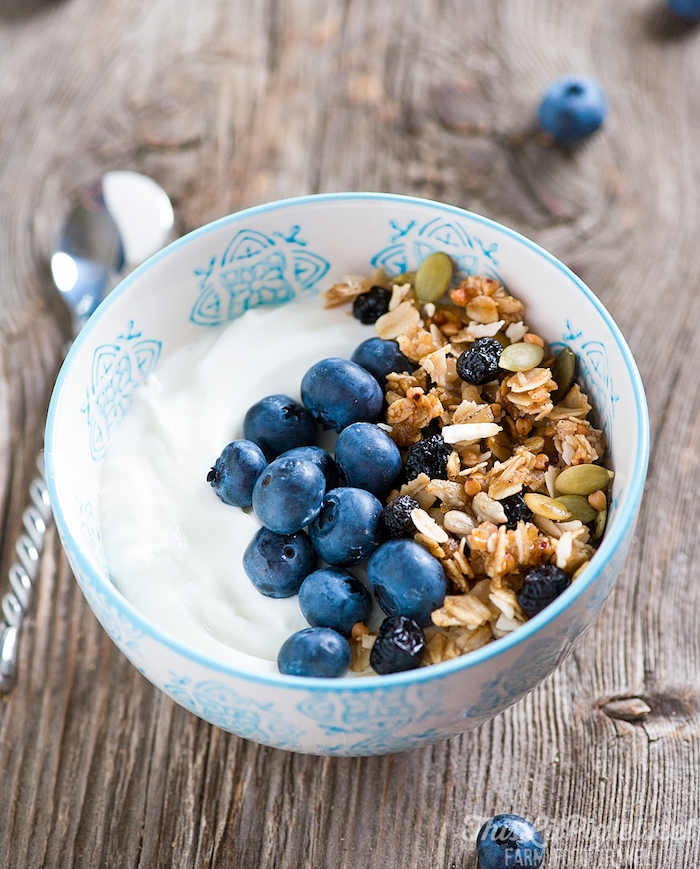
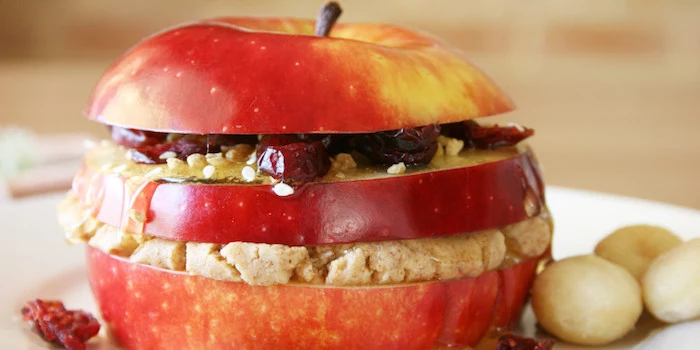
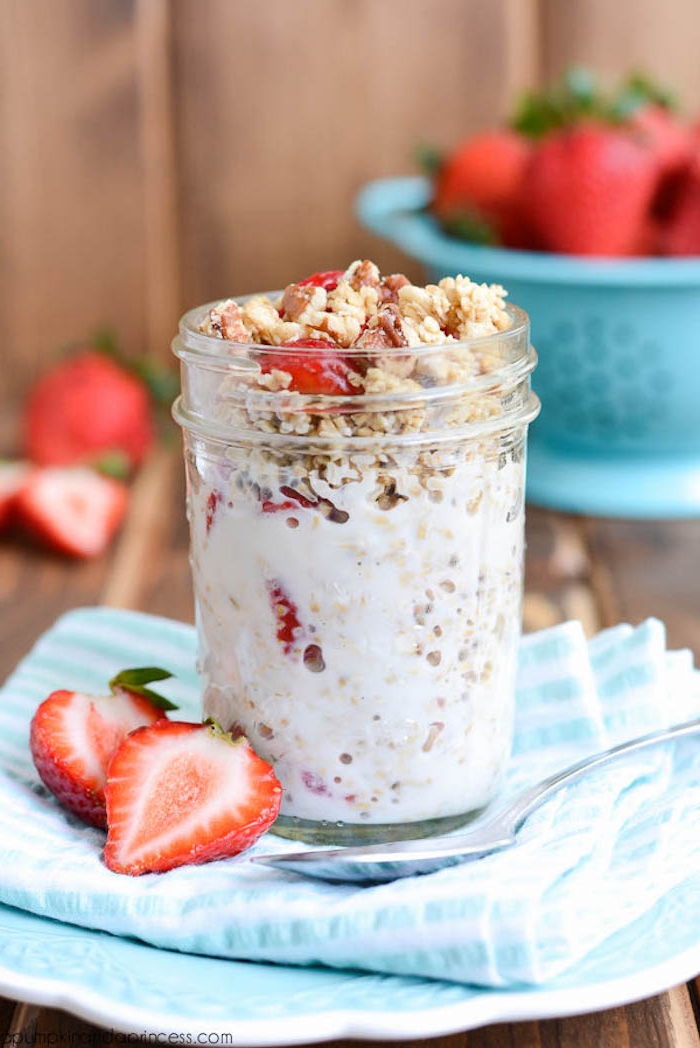
What about ‘healthy’ breakfast cereals and granola?
Be a label detective. Many brands, even organic ones, can contain as much sugar per serving as a dessert. Look for options with less than 5 grams of sugar and at least 5 grams of fiber per serving. Brands like Ezekiel 4:9 Sprouted Grain Cereal or simple puffed kamut are often better choices, which you can then top with your own fresh fruit and nuts.
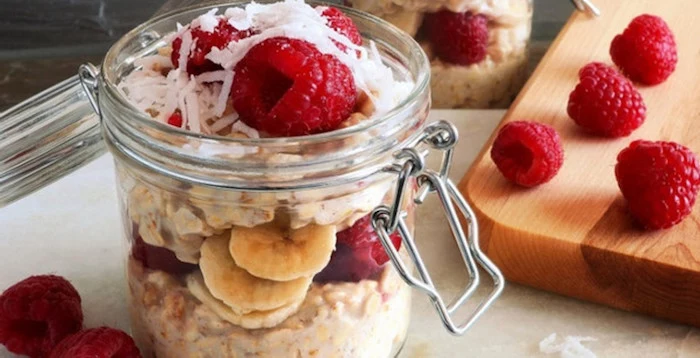
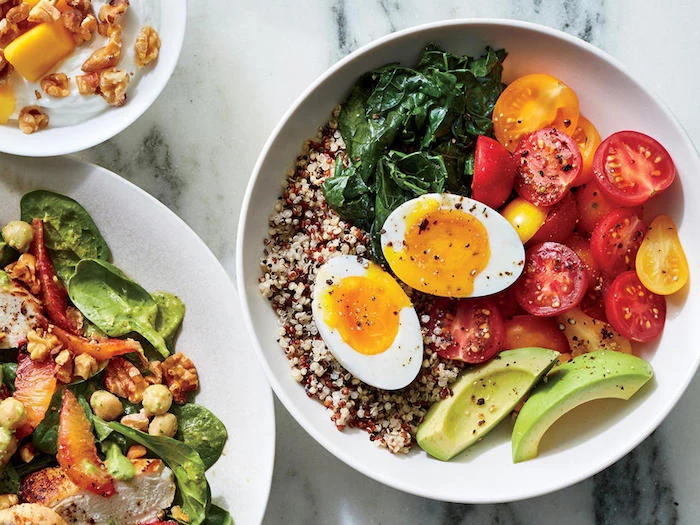

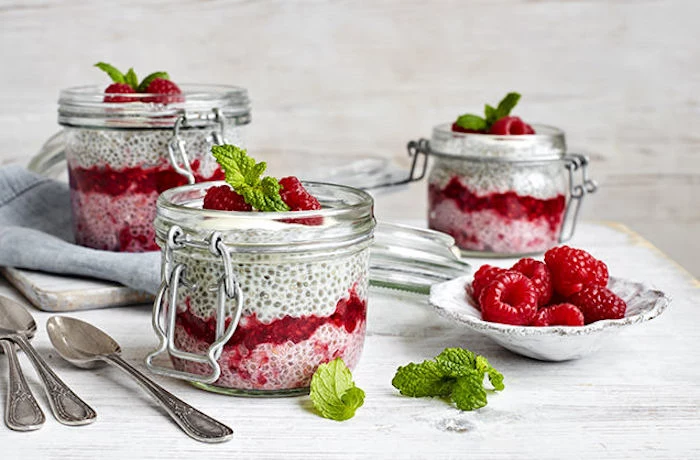
Take inspiration from the traditional Japanese breakfast, which often includes a piece of grilled fish (protein), a bowl of miso soup (hydration and nutrients), steamed rice (complex carb), and pickled vegetables (probiotics). It perfectly embodies the principle of a balanced, savory start to the day.
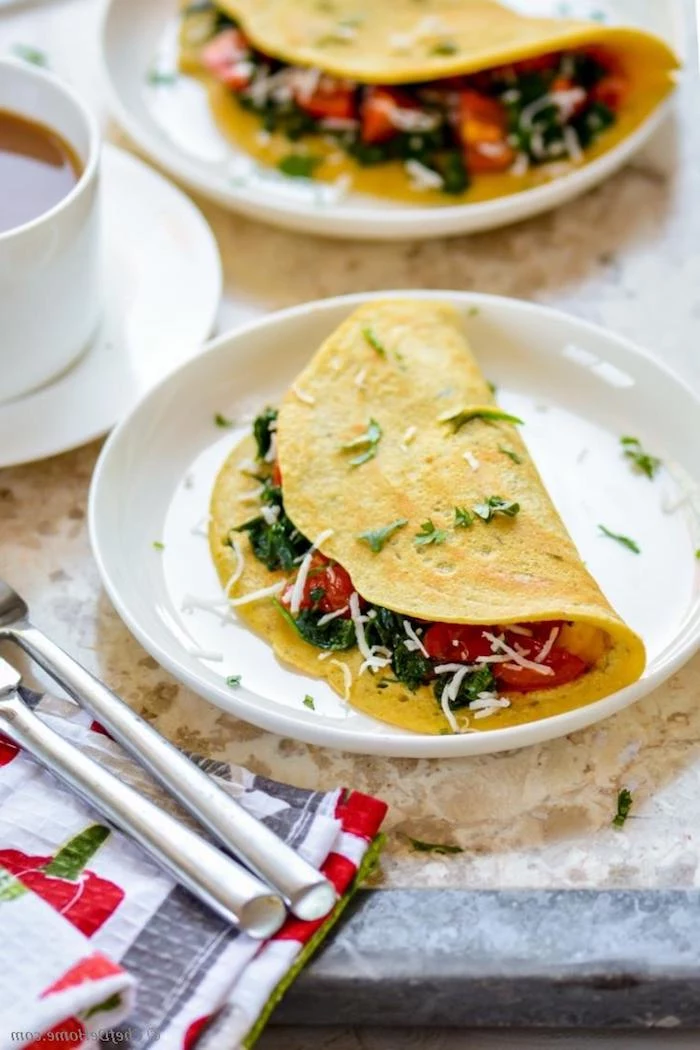
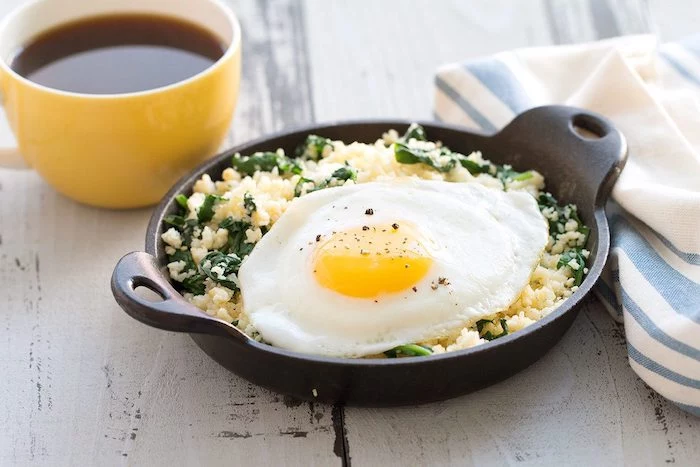
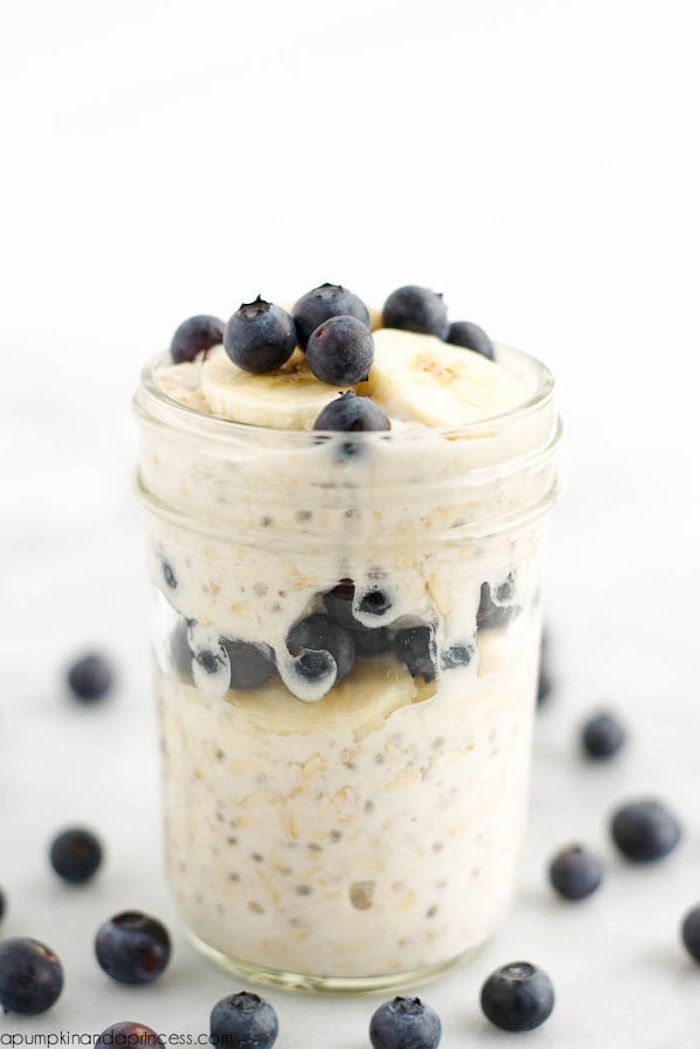
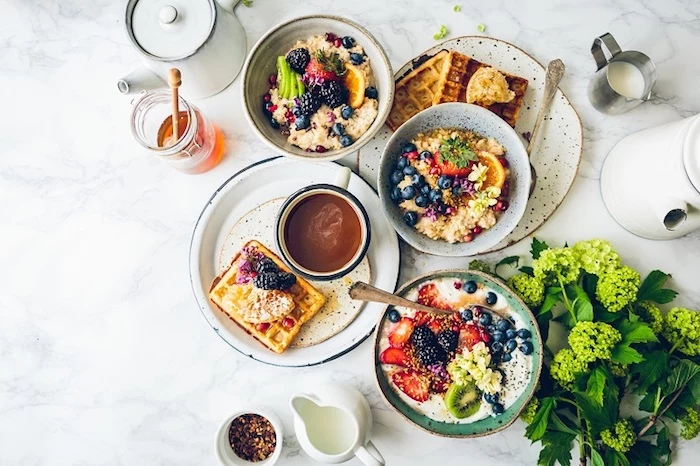
Overnight oats aren’t just a trend; they’re a nutritional strategy. Soaking oats overnight starts to break down phytic acid, an antinutrient that can interfere with mineral absorption. This makes the nutrients in the oats, like iron and zinc, more bioavailable to your body.
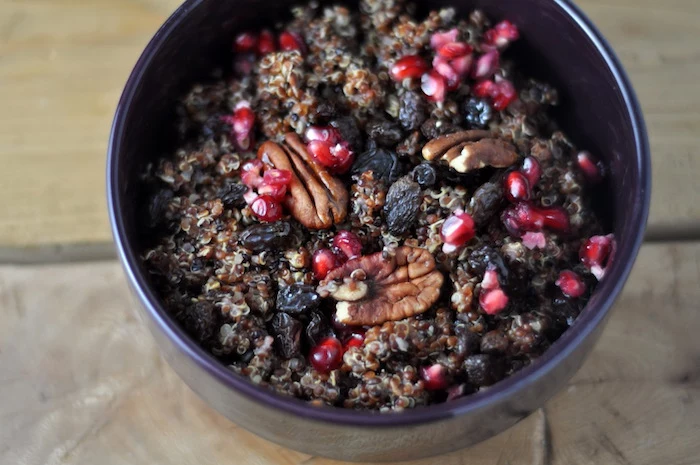

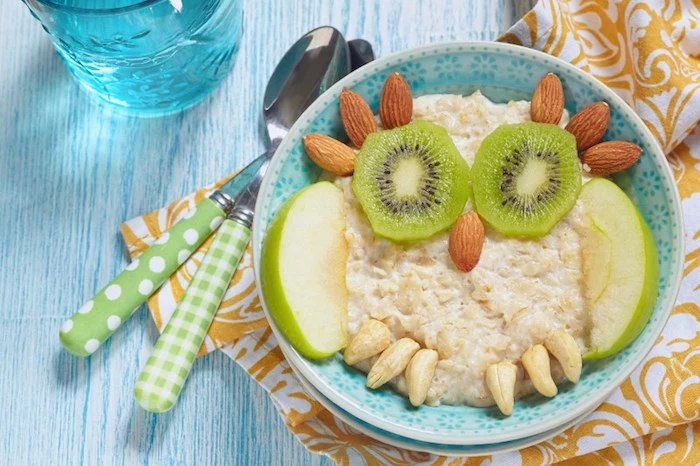
Don’t fear the yolk: For years, egg yolks were demonized for their cholesterol content. However, current research shows that for most people, dietary cholesterol has little effect on blood cholesterol. The yolk is a powerhouse of nutrients, including vitamin D, choline (crucial for brain health), and healthy fats that contribute to satiety.
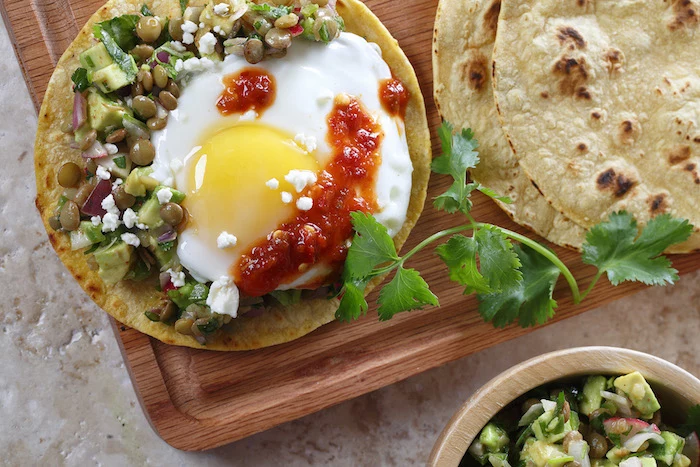
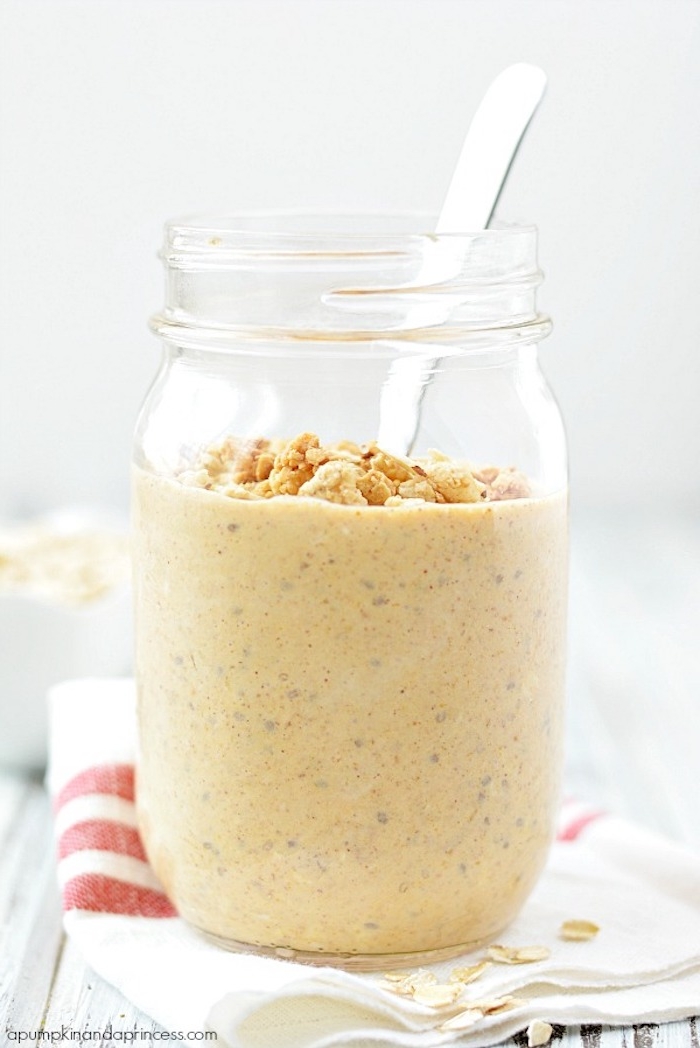
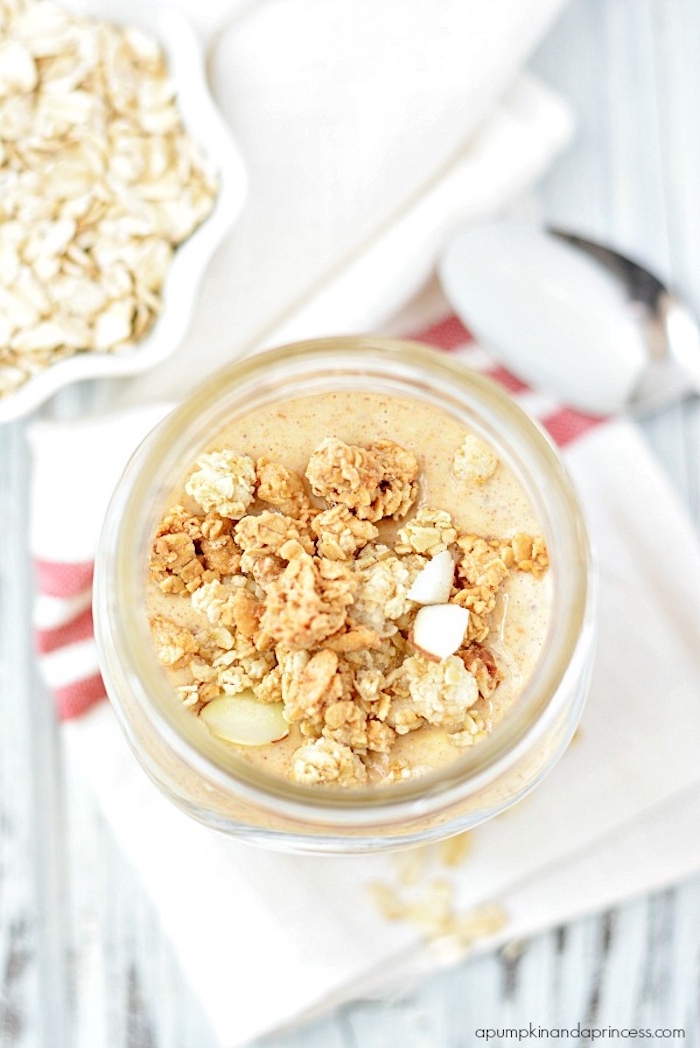
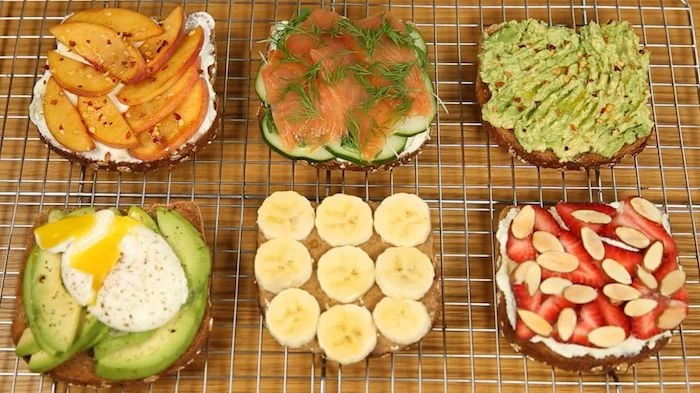
- It adds creaminess without dairy.
- It provides a significant dose of monounsaturated fats, which are heart-healthy and help you feel full.
- It’s a good source of fiber, aiding digestion and slowing sugar release.
The secret ingredient? Avocado. Blend a quarter of a ripe avocado into your next smoothie for a nutrient-dense boost.
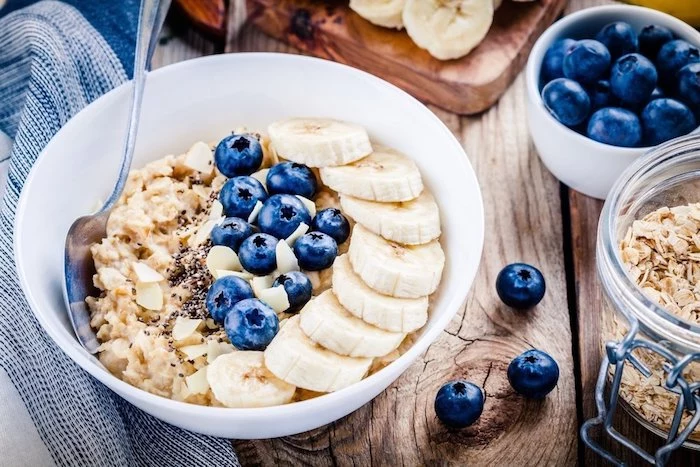
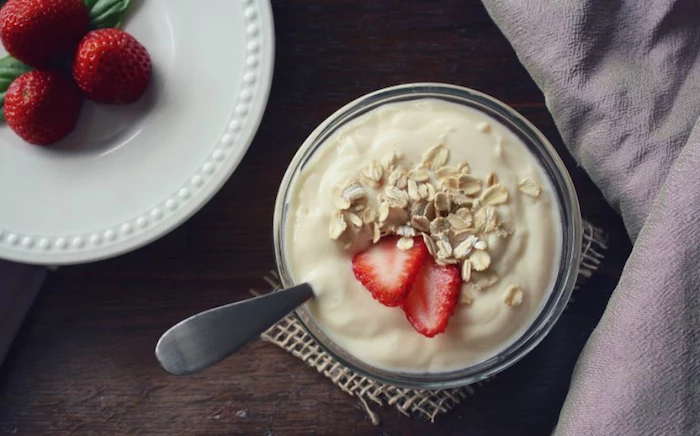
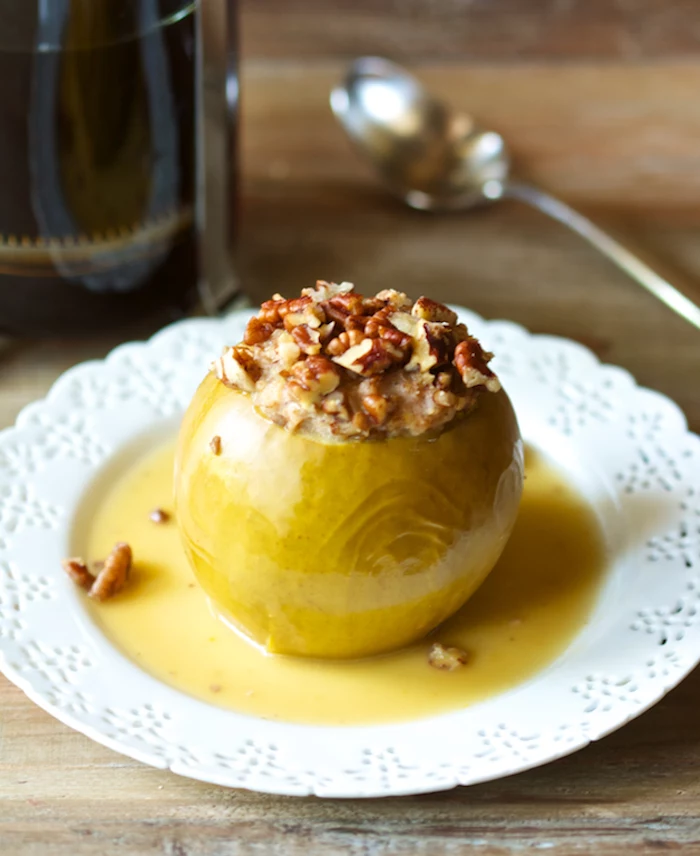
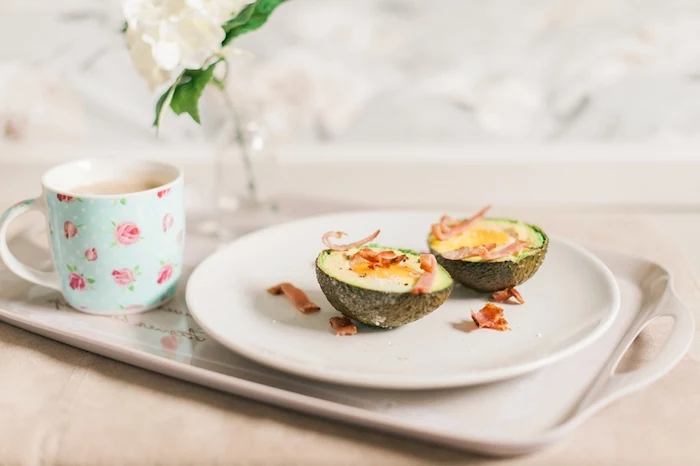
On a budget? Lentils and beans are fantastic, low-cost sources of protein and complex carbs. A simple breakfast burrito with scrambled eggs, black beans, and a sprinkle of cheese in a whole-wheat tortilla is inexpensive, filling, and can be made in minutes.
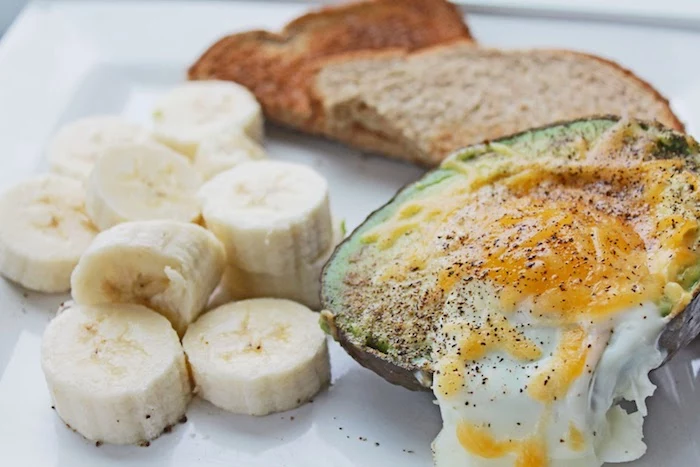

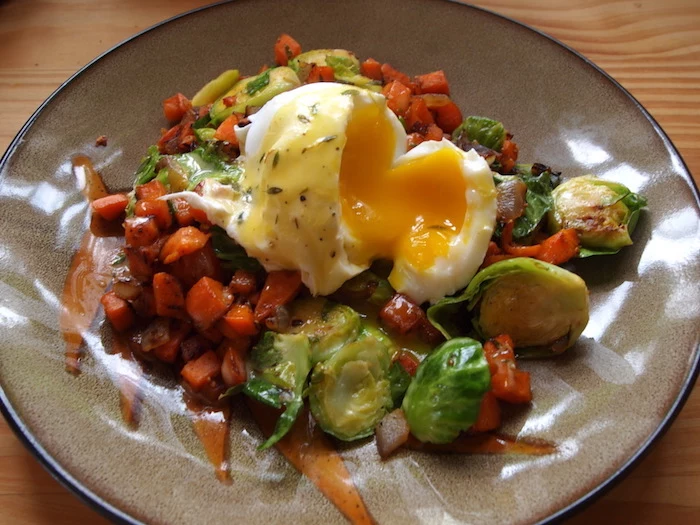
The way you eat is as important as what you eat. Instead of scrolling through your phone, take five minutes to sit and mindfully enjoy your meal. This simple practice can improve digestion and increase your sense of satisfaction, helping the meal’s satiating effects last even longer.

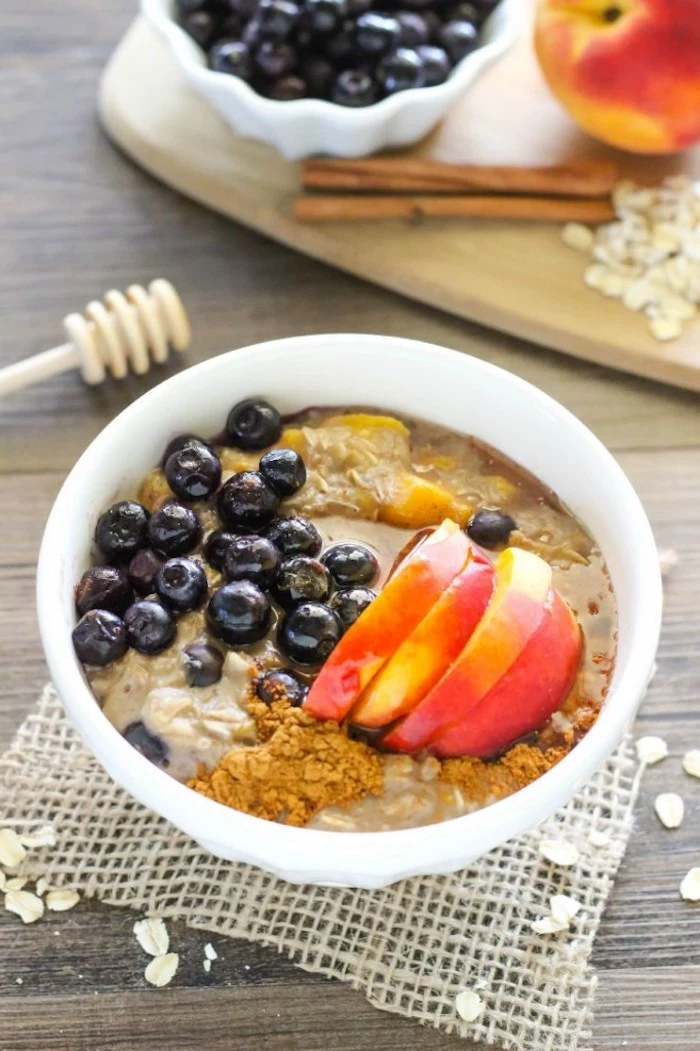
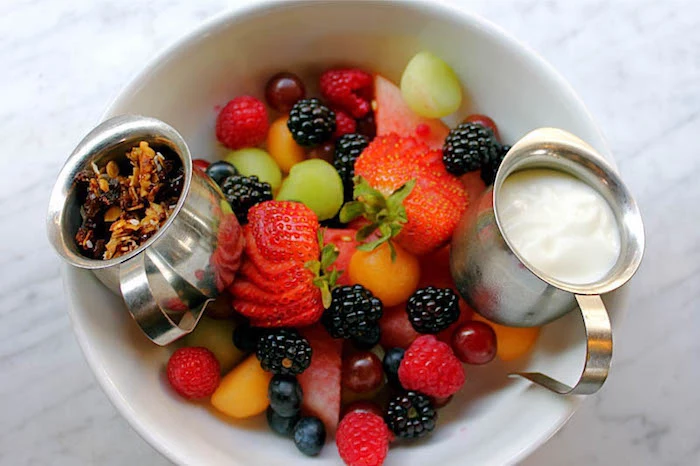
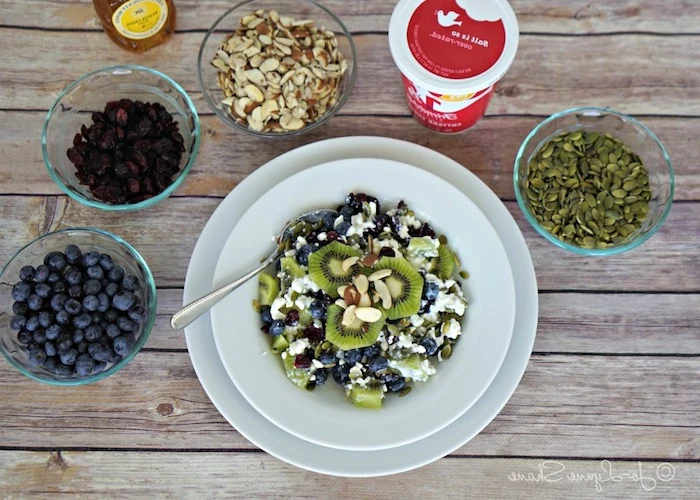
Can coffee be part of a healthy breakfast?
Absolutely, but timing matters. Drinking coffee on a completely empty stomach can sometimes increase cortisol (the stress hormone) and stomach acid. It’s often better to have it with or after your food. For a protein boost, try a ‘proffee’ by blending your chilled coffee with a scoop of vanilla or chocolate protein powder.
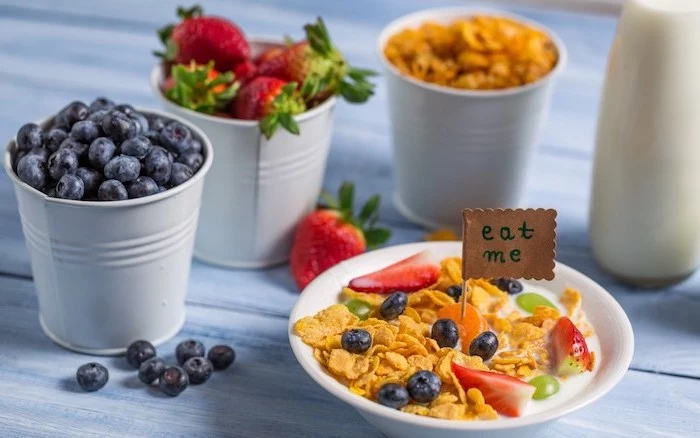
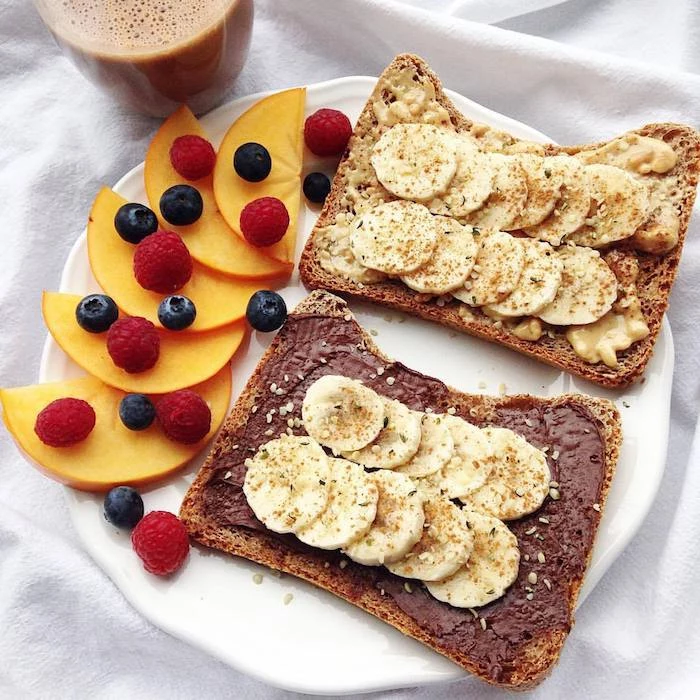
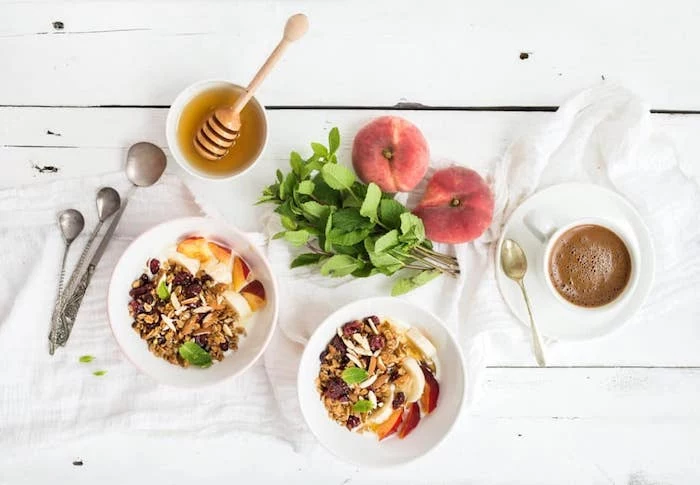
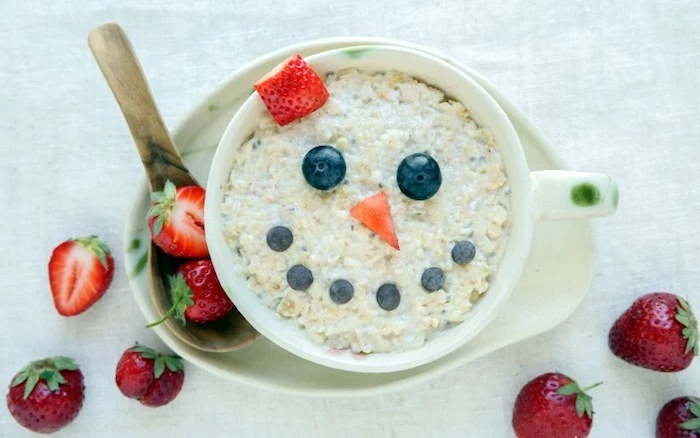
Whole Fruit > Fruit Juice: A glass of orange juice can contain the sugar of 4-5 oranges but none of the fiber. Eating a whole orange, on the other hand, provides fiber that slows down the absorption of its natural sugars, preventing a sharp spike and crash. This simple swap makes a huge difference in sustained energy.
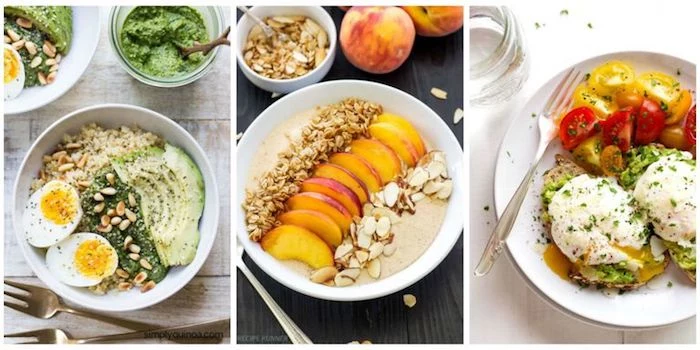
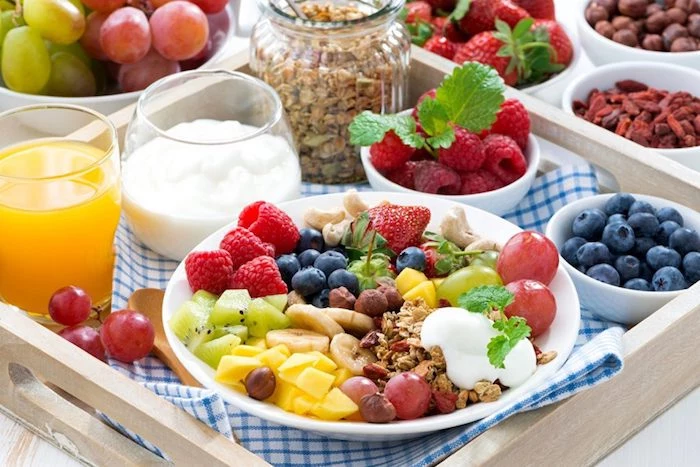
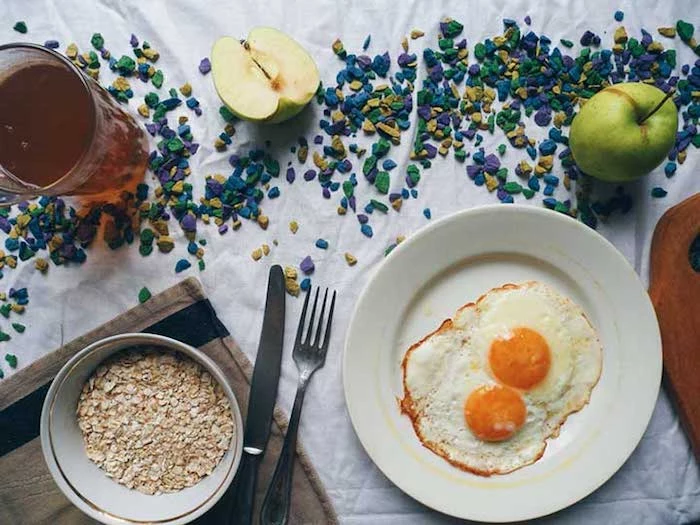
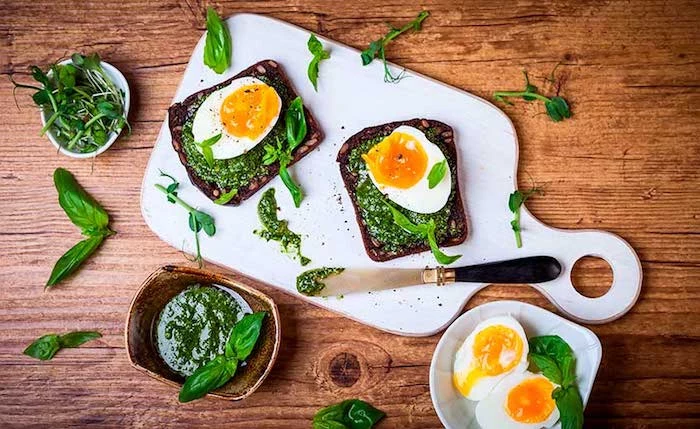
Make your own simple ‘power granola’ to control the sugar. In a bowl, mix 2 cups of rolled oats, 1/2 cup of chopped almonds, 1/4 cup of pumpkin seeds, and a dash of cinnamon. Drizzle with 3 tablespoons of melted coconut oil and 2 tablespoons of maple syrup. Bake at 300°F (150°C) for 20-25 minutes. It’s far healthier and cheaper than store-bought versions.
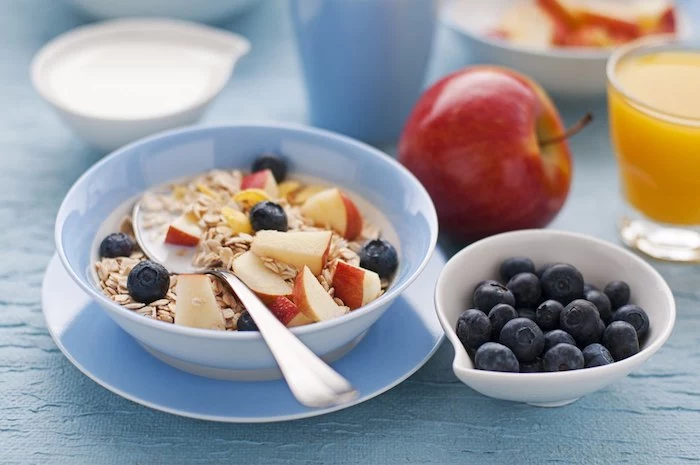
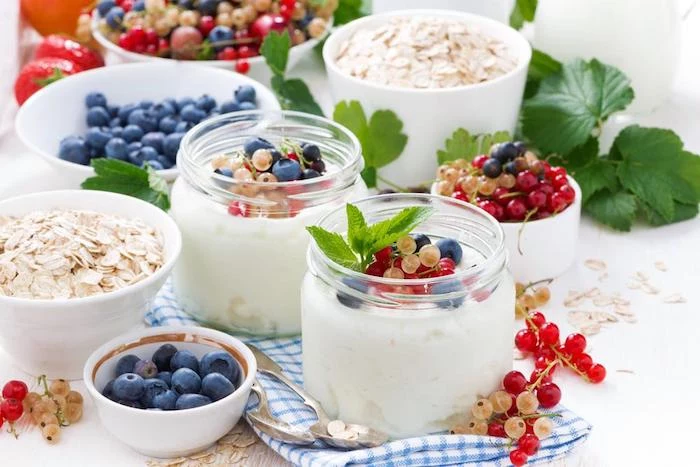
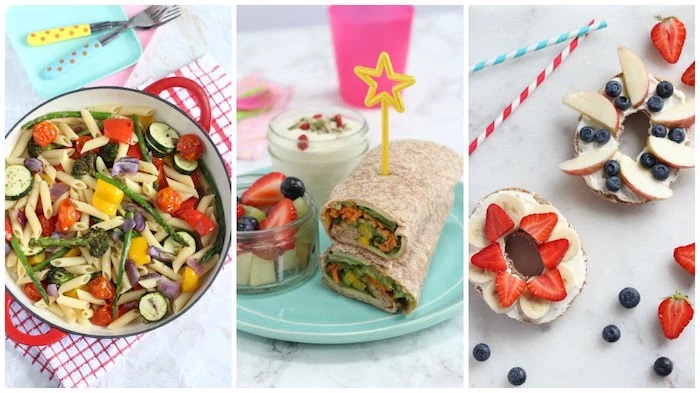
A single serving of plain Greek yogurt can contain 15-20 grams of protein, nearly double that of regular yogurt. This is due to the straining process that removes excess whey, leaving a more concentrated, protein-rich product.
This makes it an incredibly efficient vehicle for meeting your morning protein goals. Always choose plain versions to avoid the added sugars found in flavored varieties.
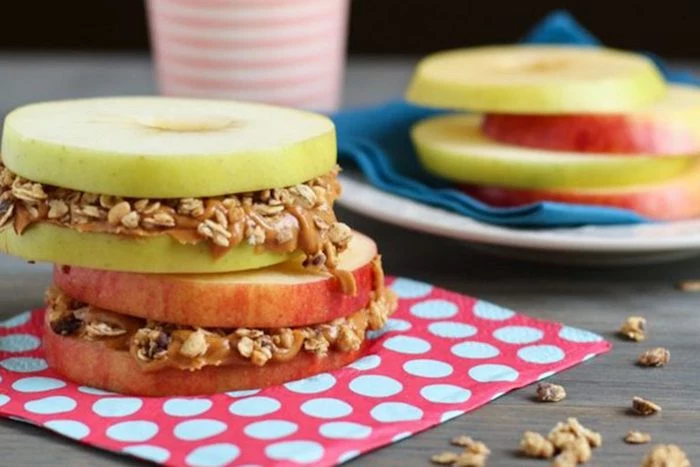
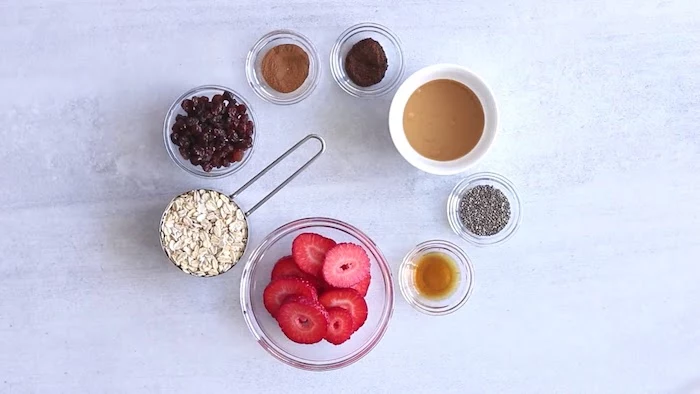
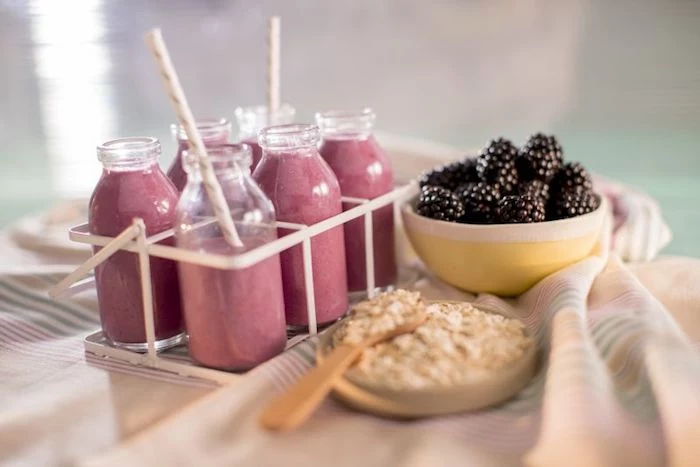

Think beyond sweet oatmeal. A savory oat bowl is a game-changer. Cook your oats with broth instead of water, and top with a fried egg, a few wilted spinach leaves, and a dash of hot sauce. It’s a warm, comforting, and perfectly balanced meal that feels more like ‘real food’ to many people.
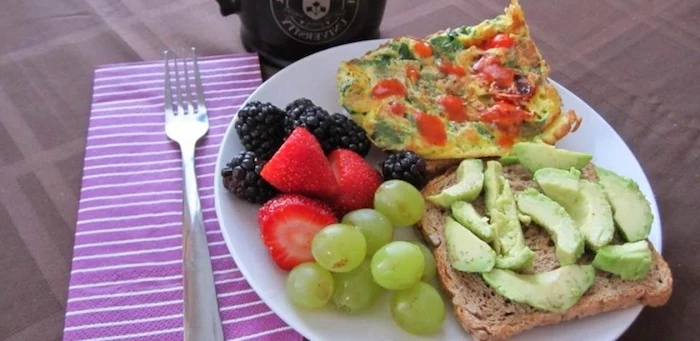
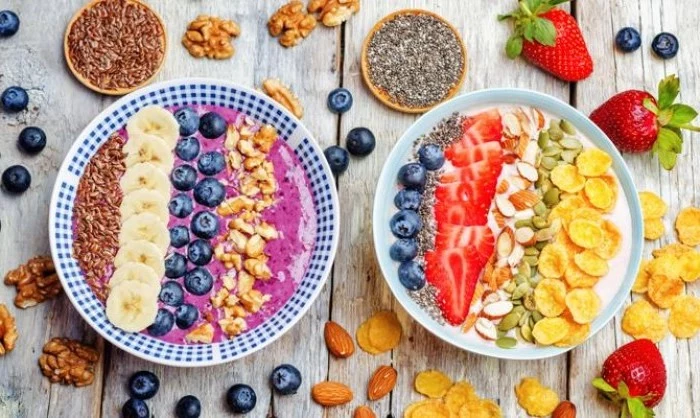
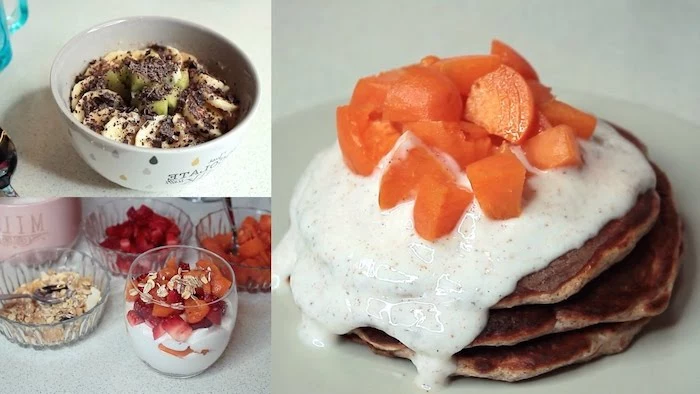

Tofu Scramble: An excellent plant-based alternative to eggs. Crumble a block of firm tofu into a pan with a little olive oil. Add a pinch of turmeric for color, some nutritional yeast for a cheesy flavor, and black salt (kala namak) for an ‘eggy’ taste. Sauté with onions and peppers for a complete, high-protein vegan breakfast.
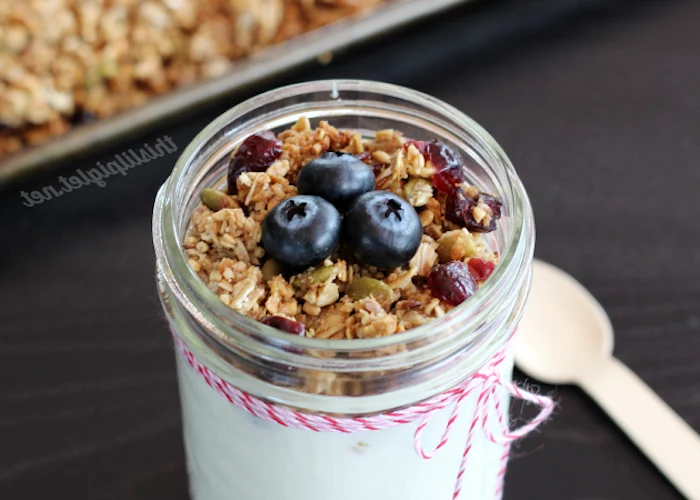
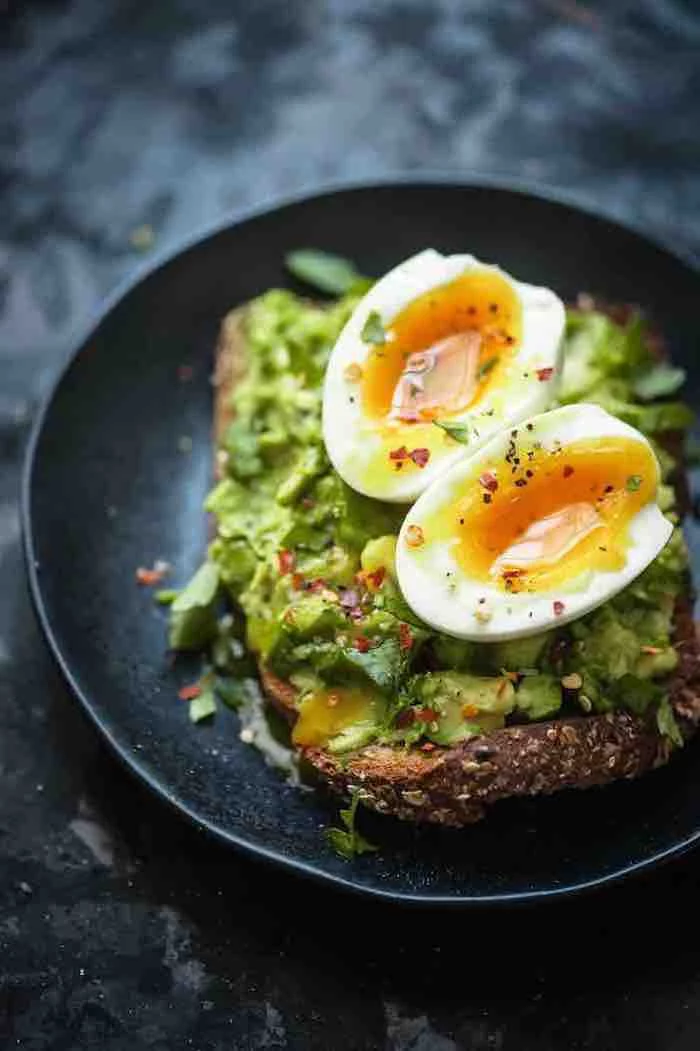
The Nut Butter Check: Not all nut butters are created equal. Flip the jar and check the ingredients. The best options, like Kirkland Signature’s Almond Butter or Justin’s Classic Peanut Butter, contain just one or two ingredients: roasted nuts and maybe salt. Avoid those with added sugars, hydrogenated oils, or palm oil.










